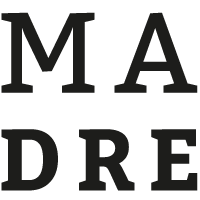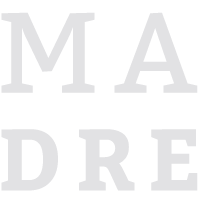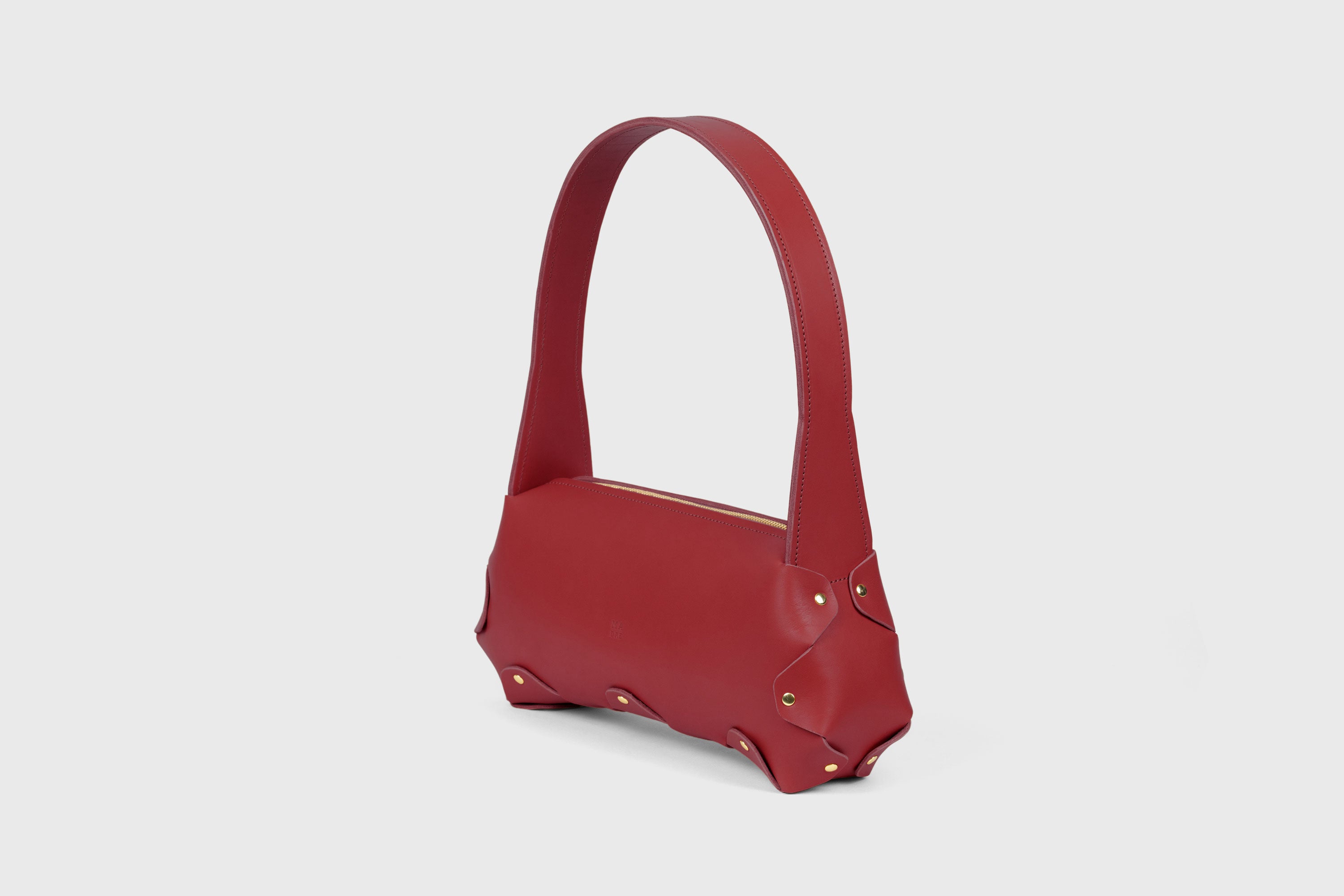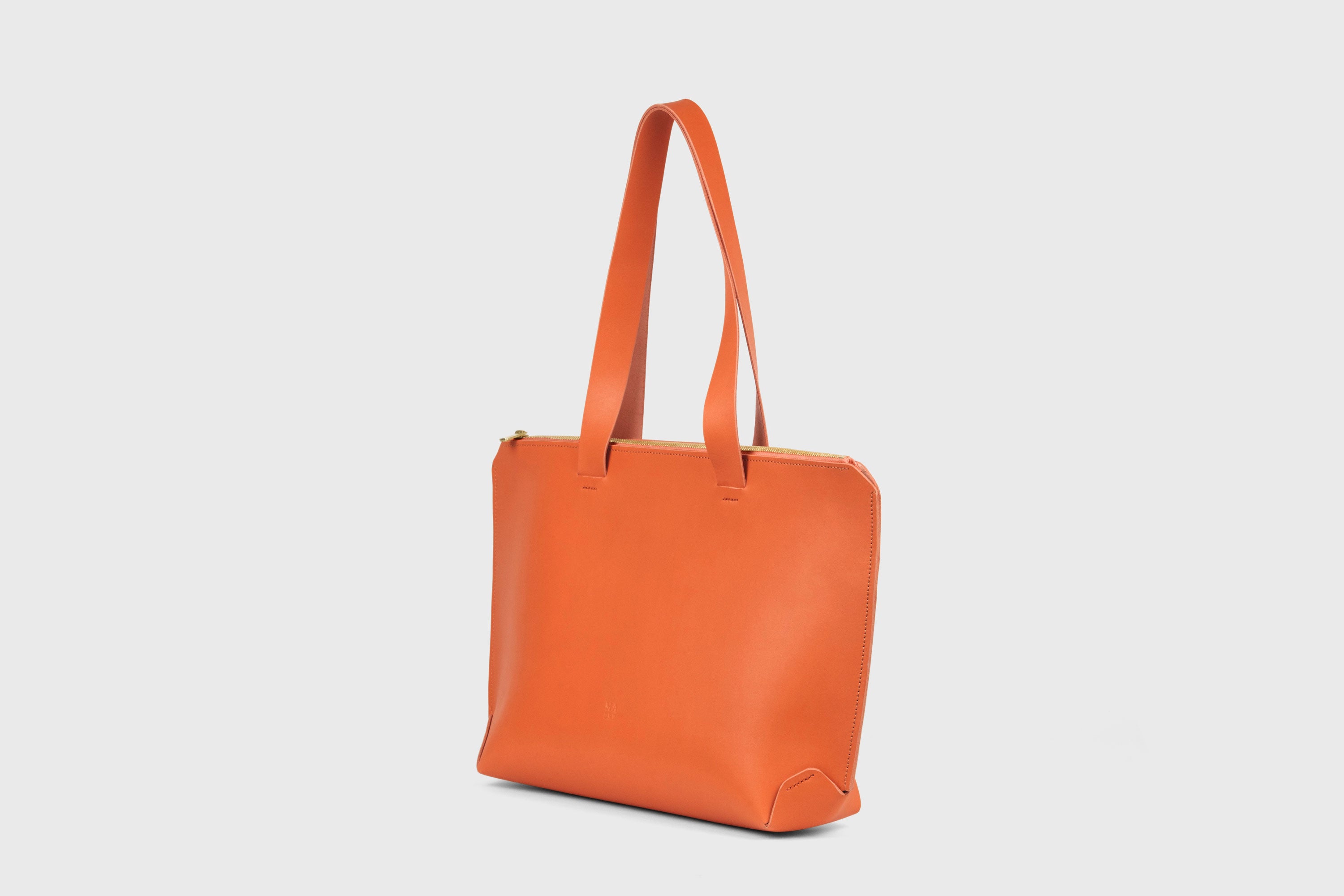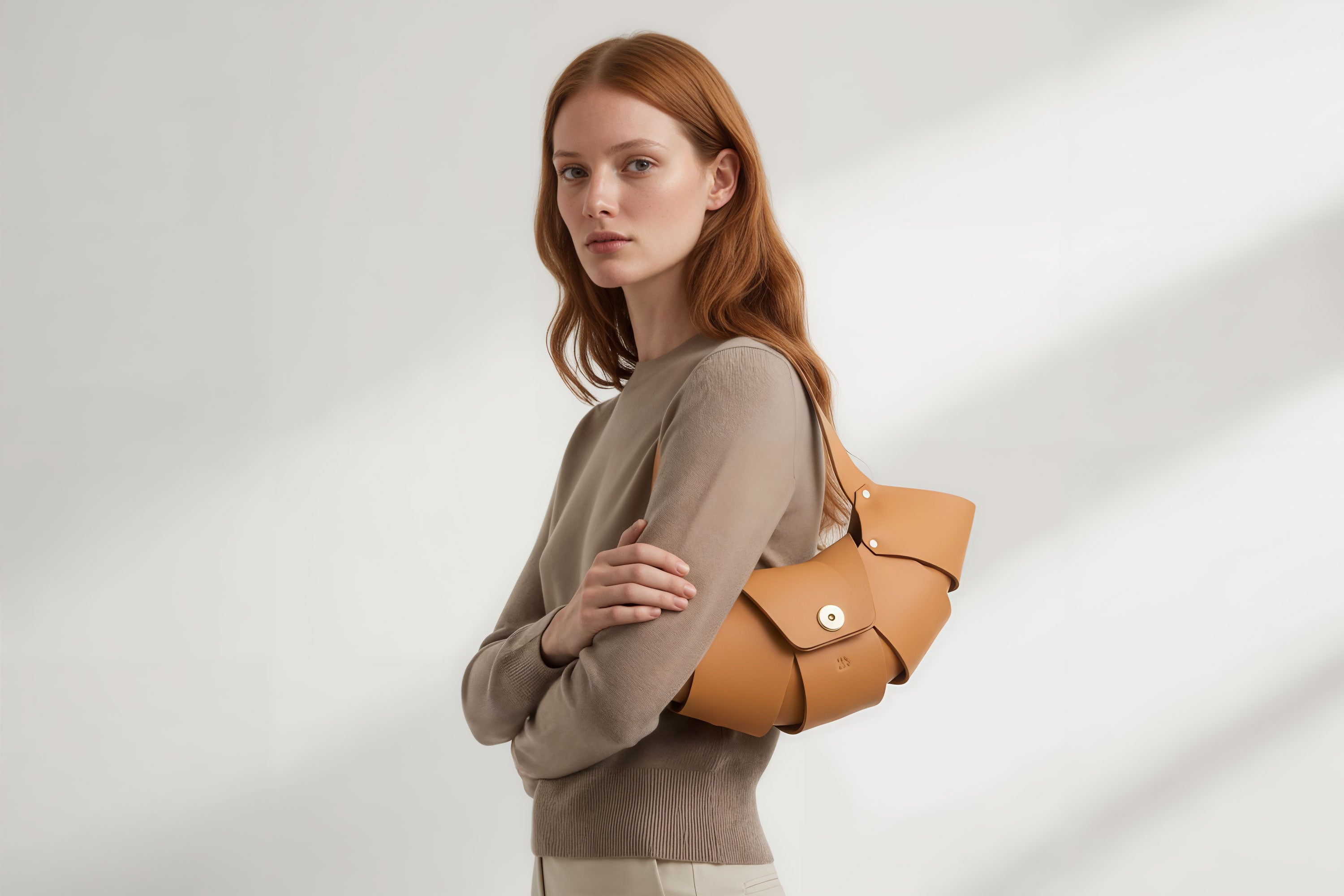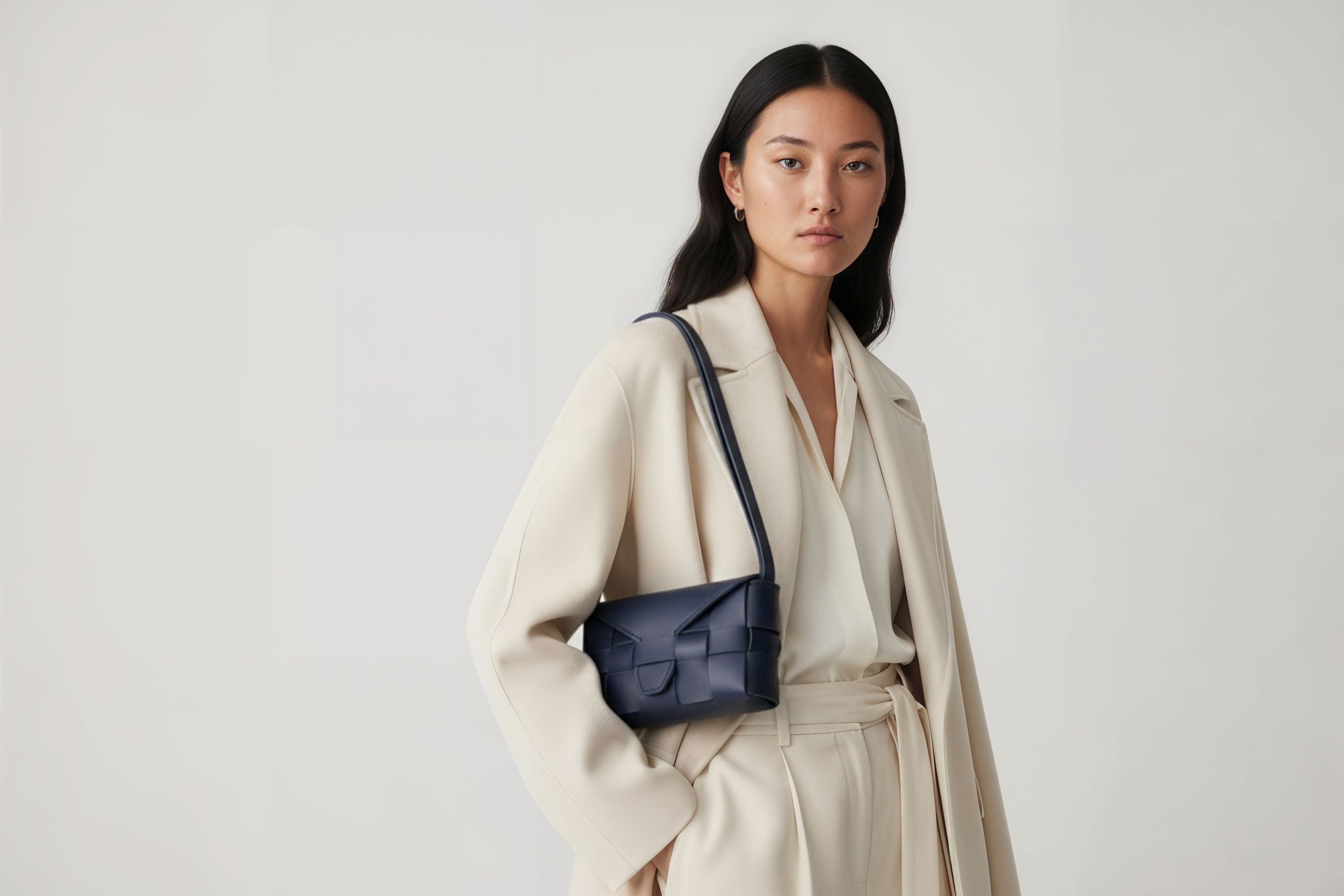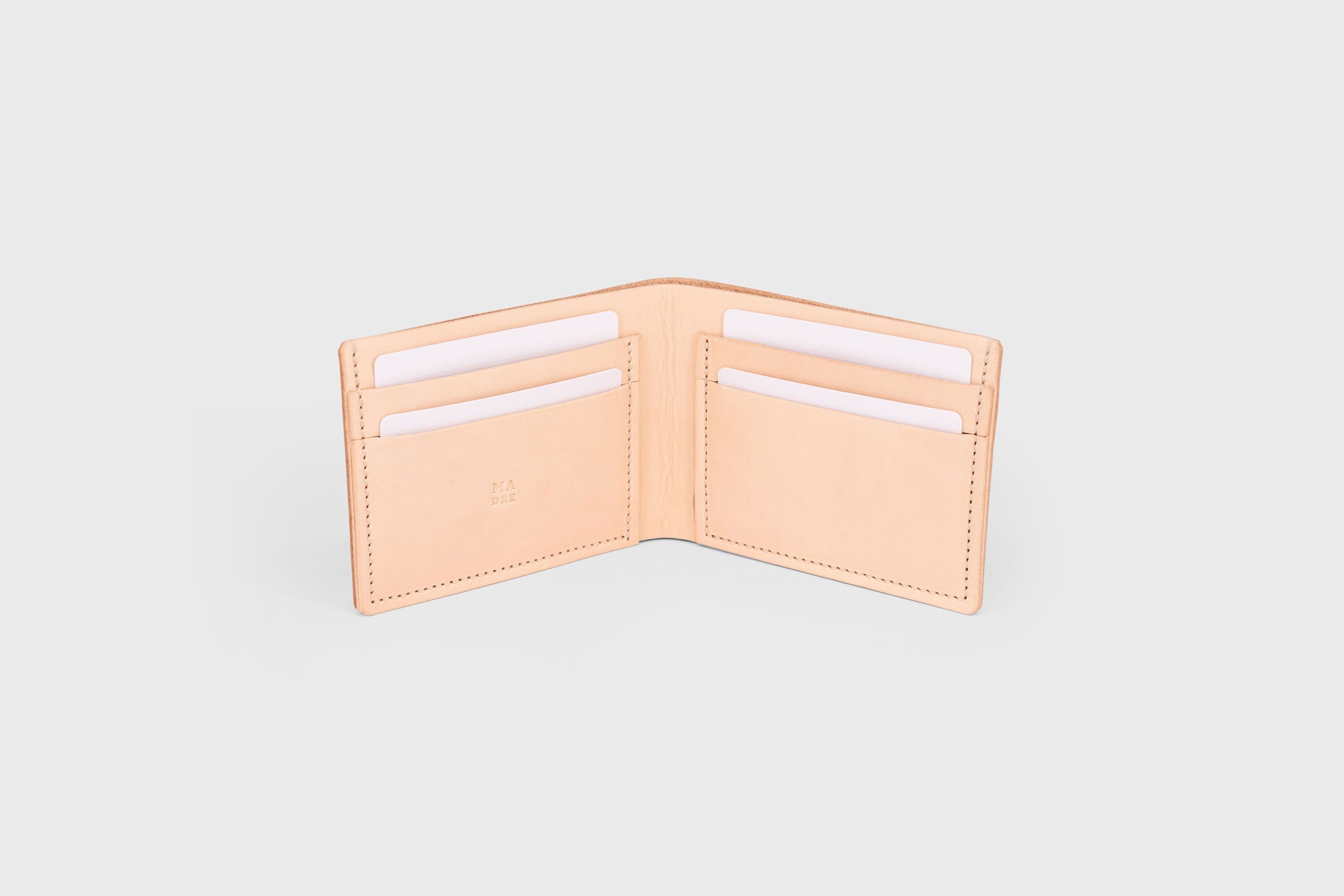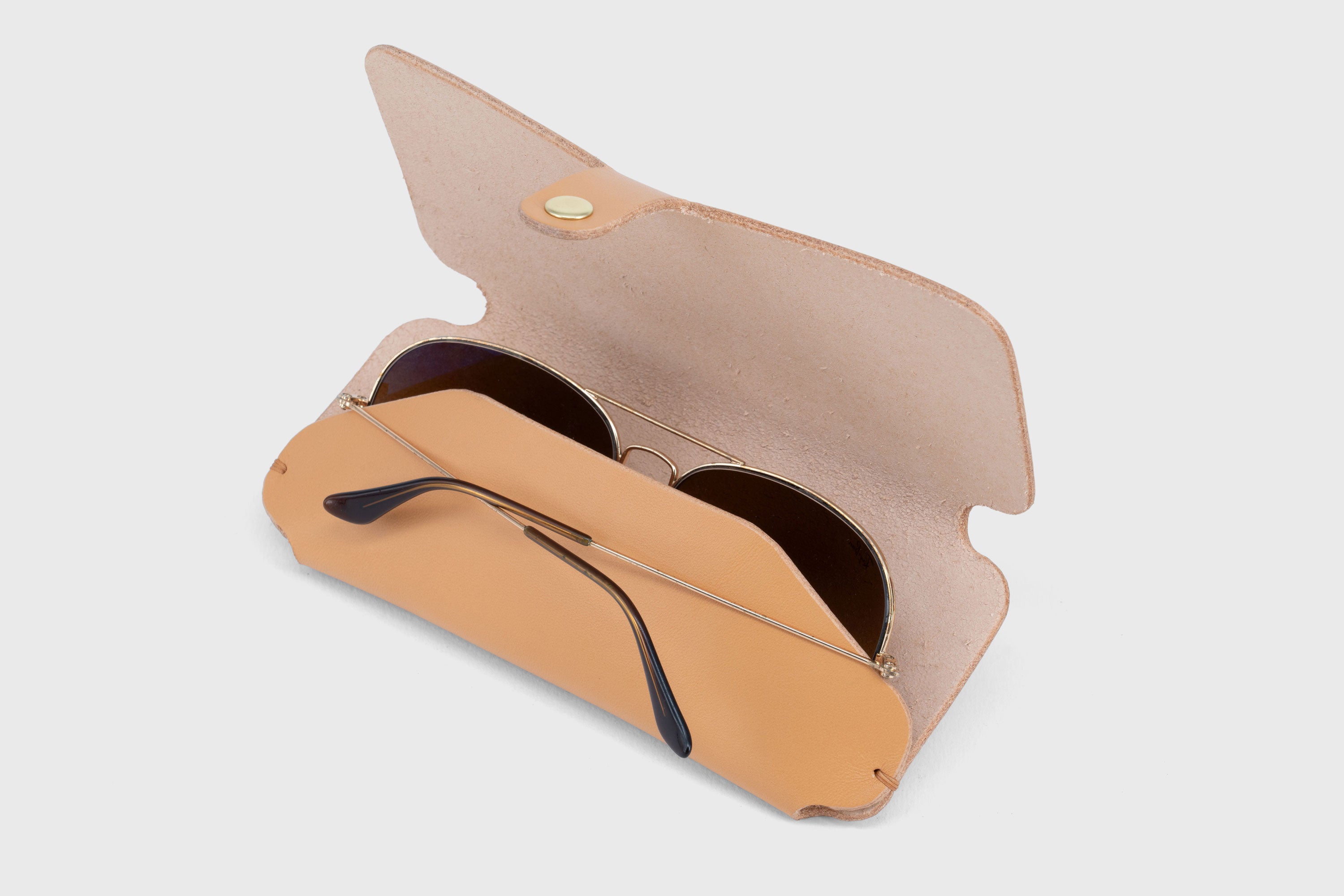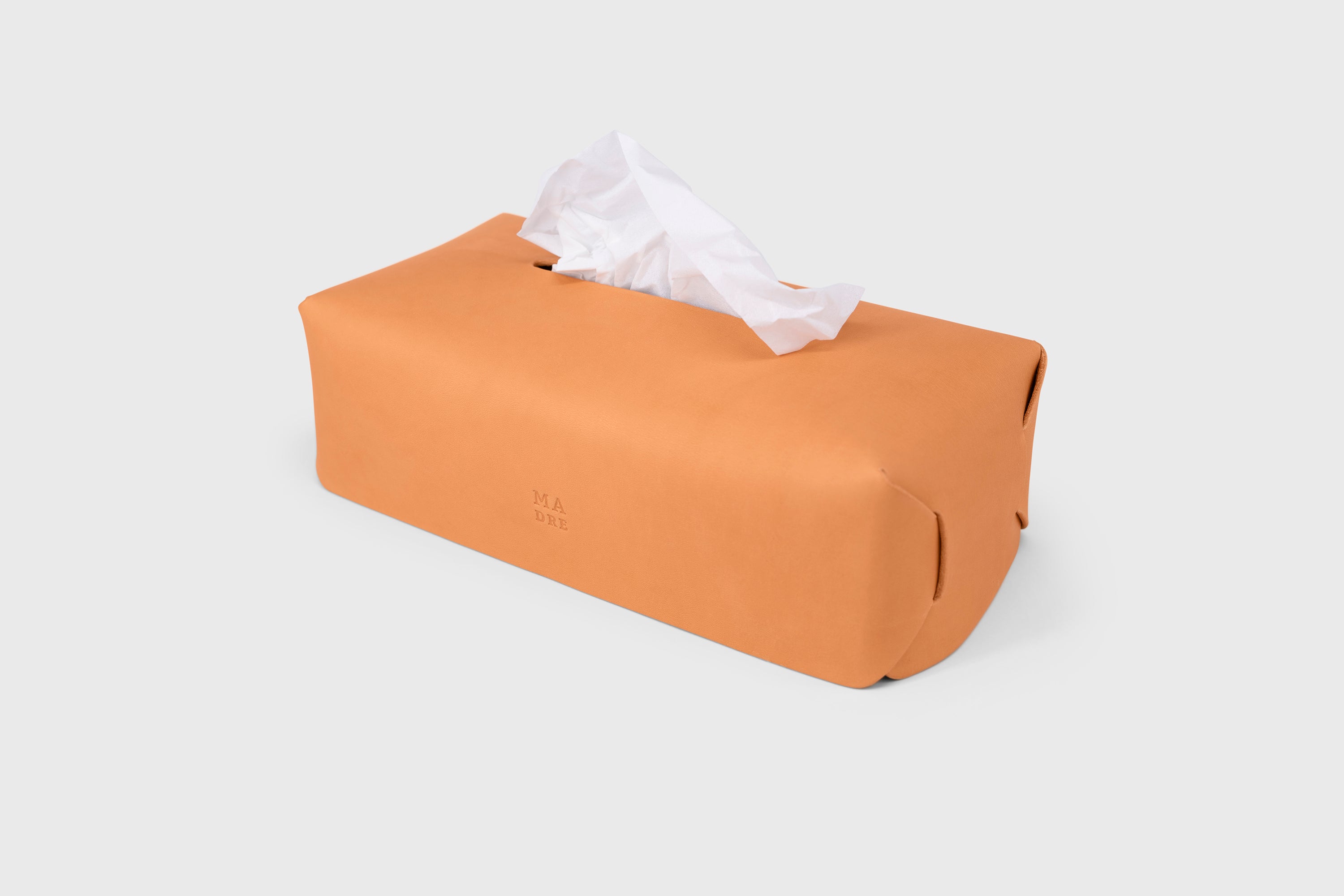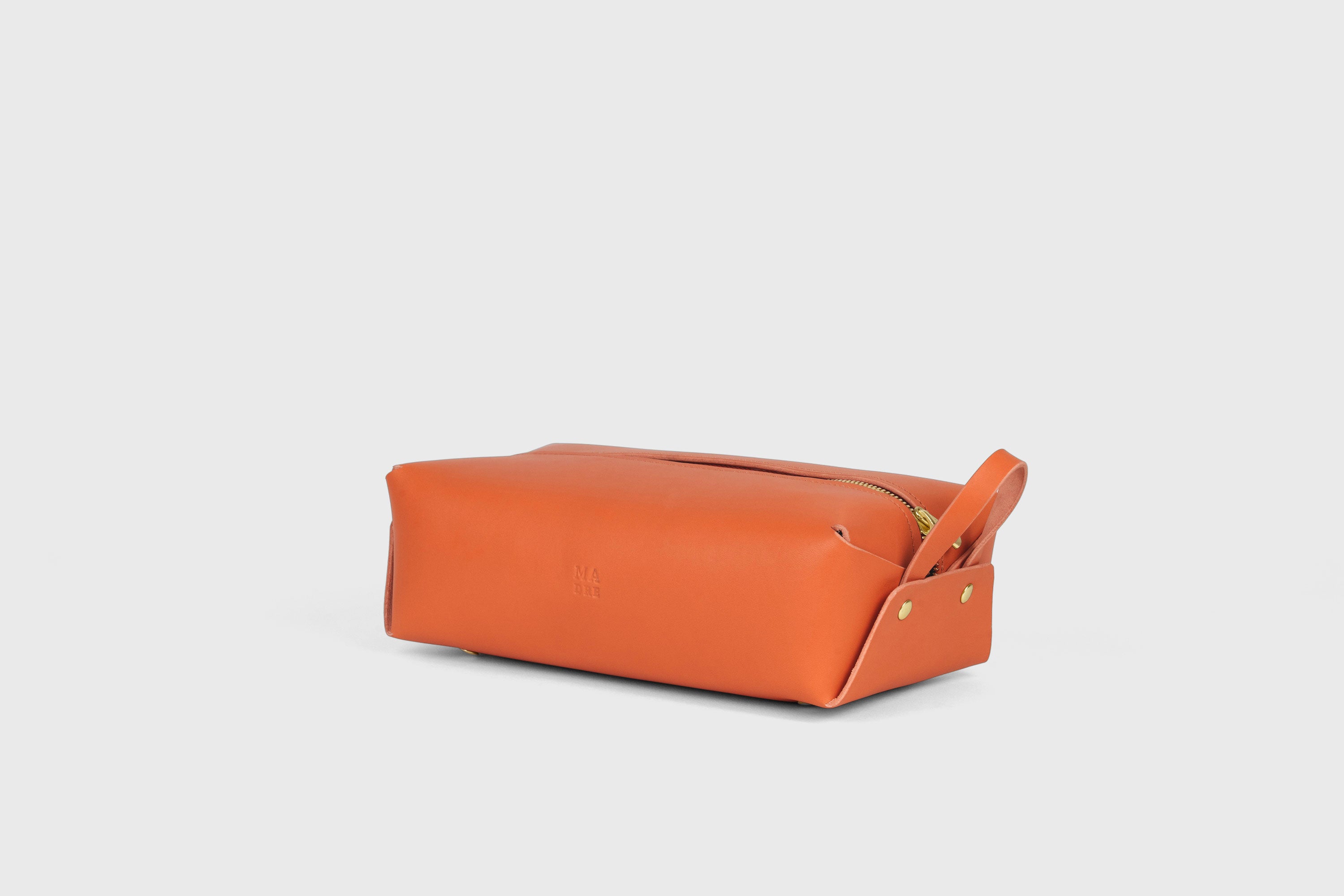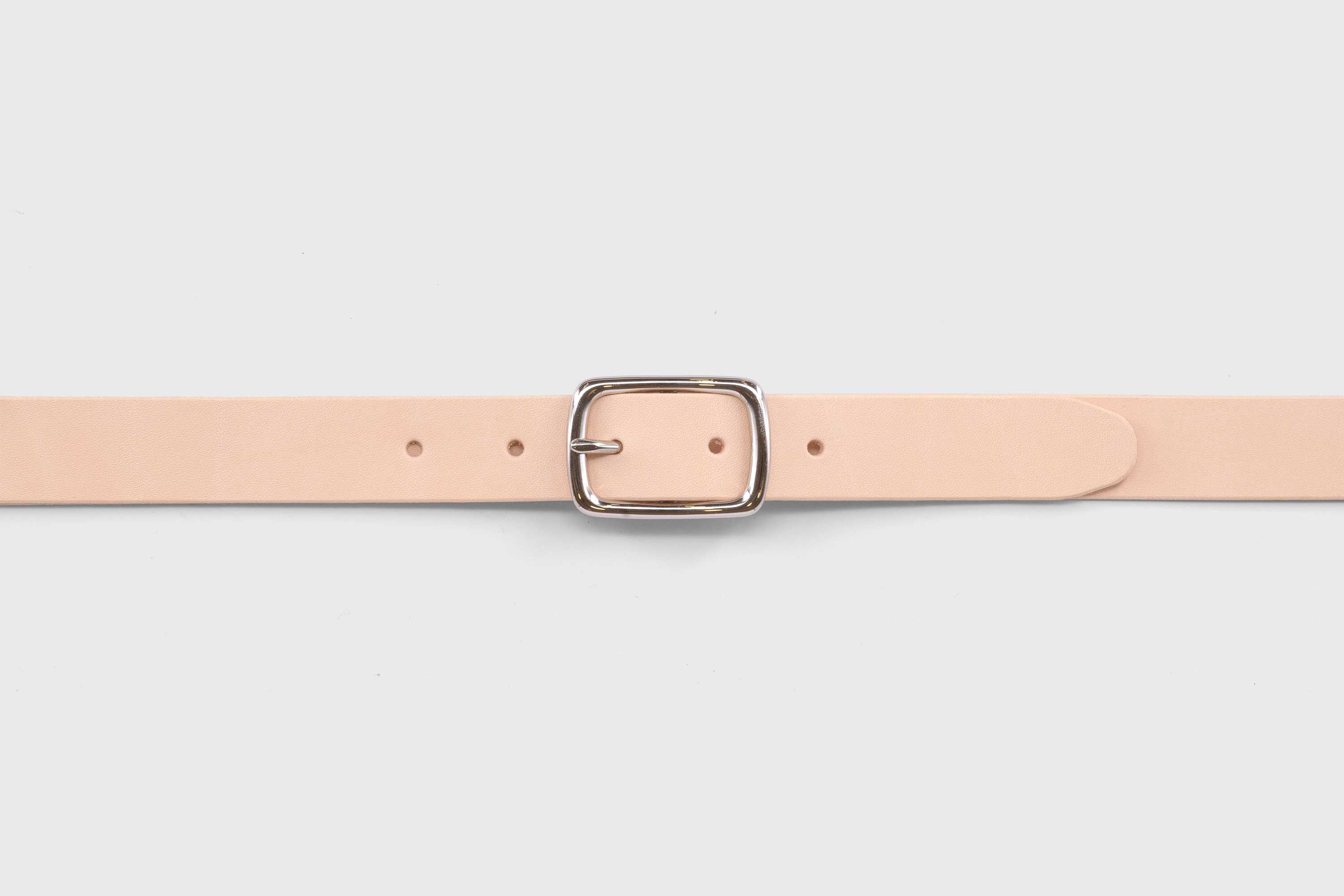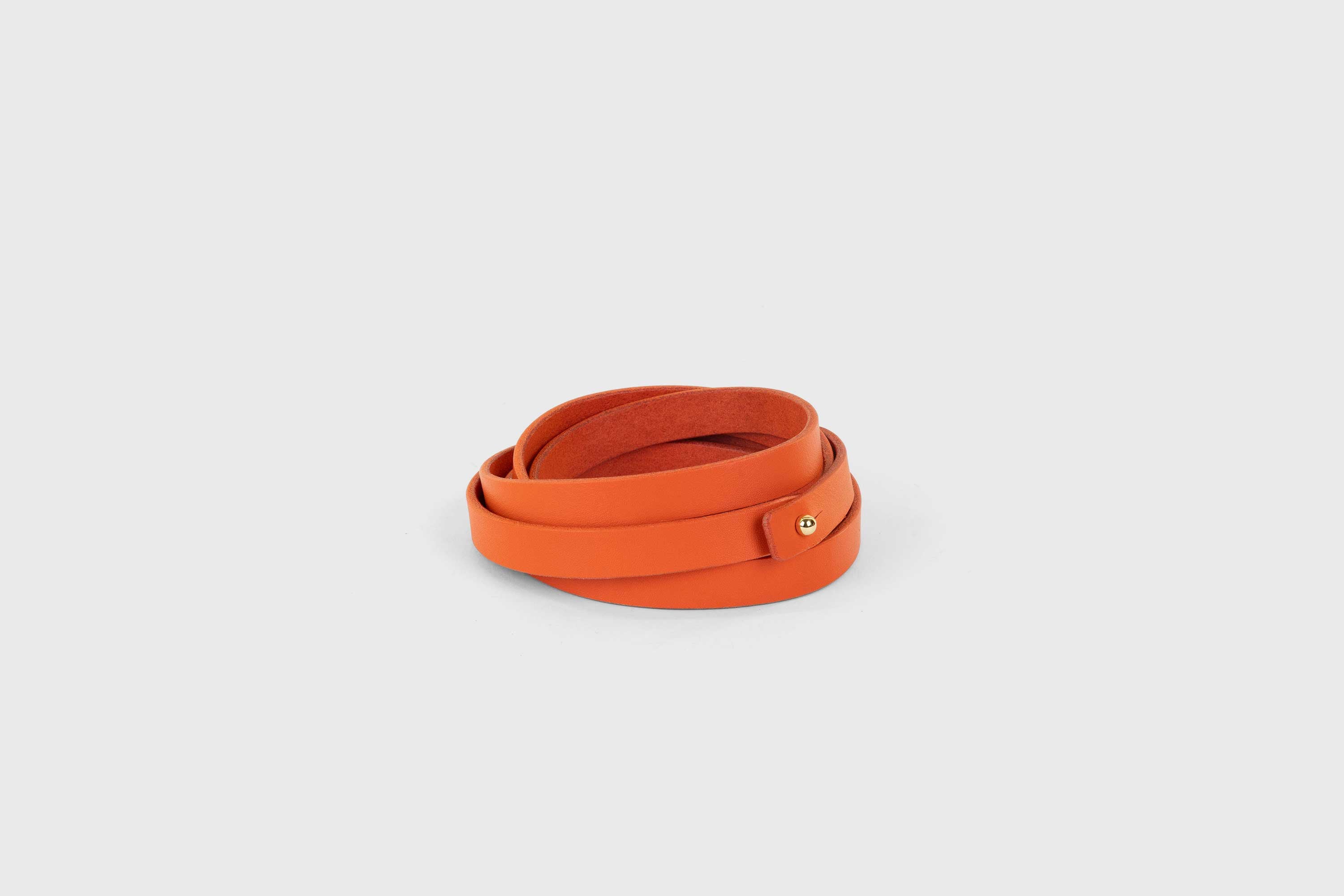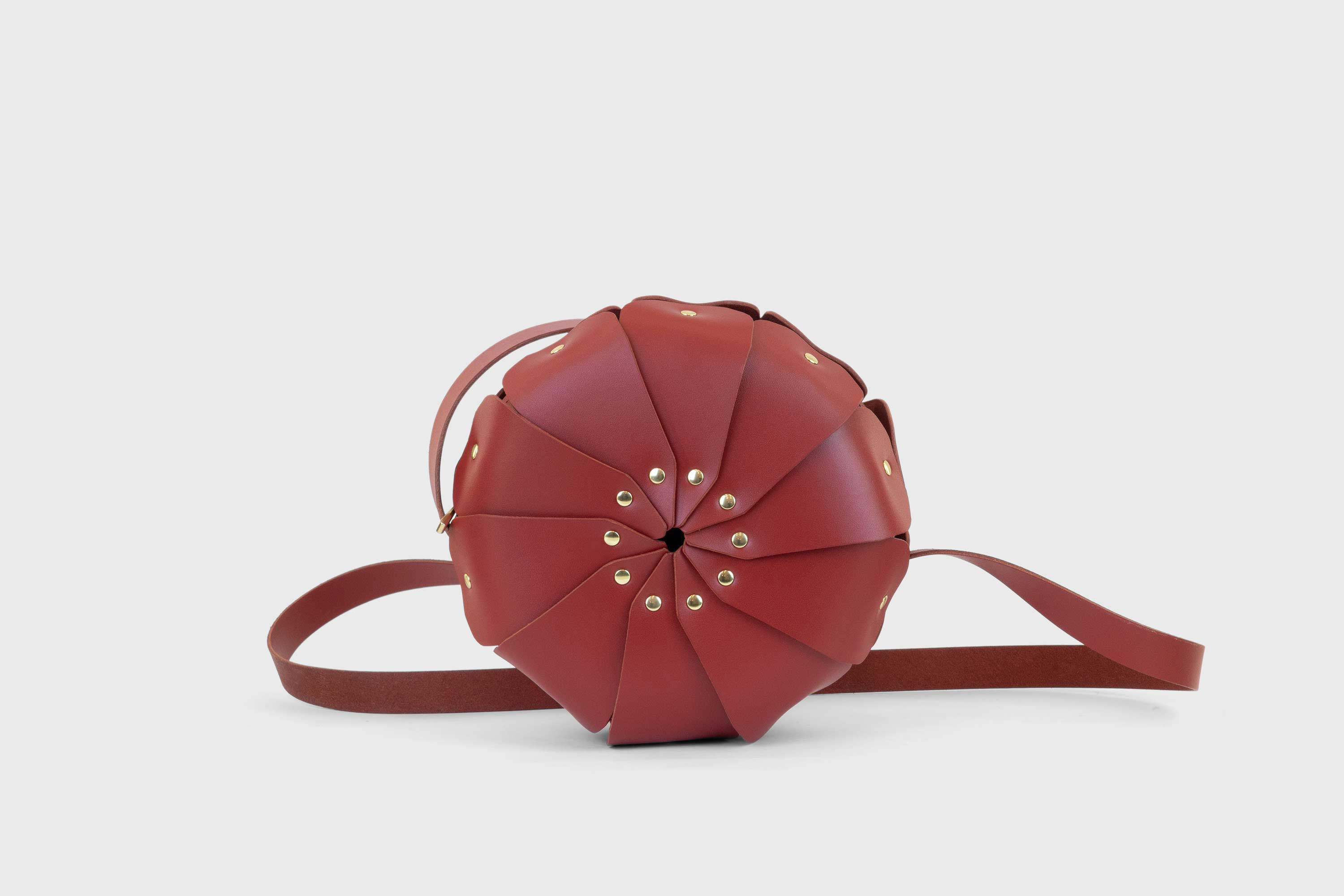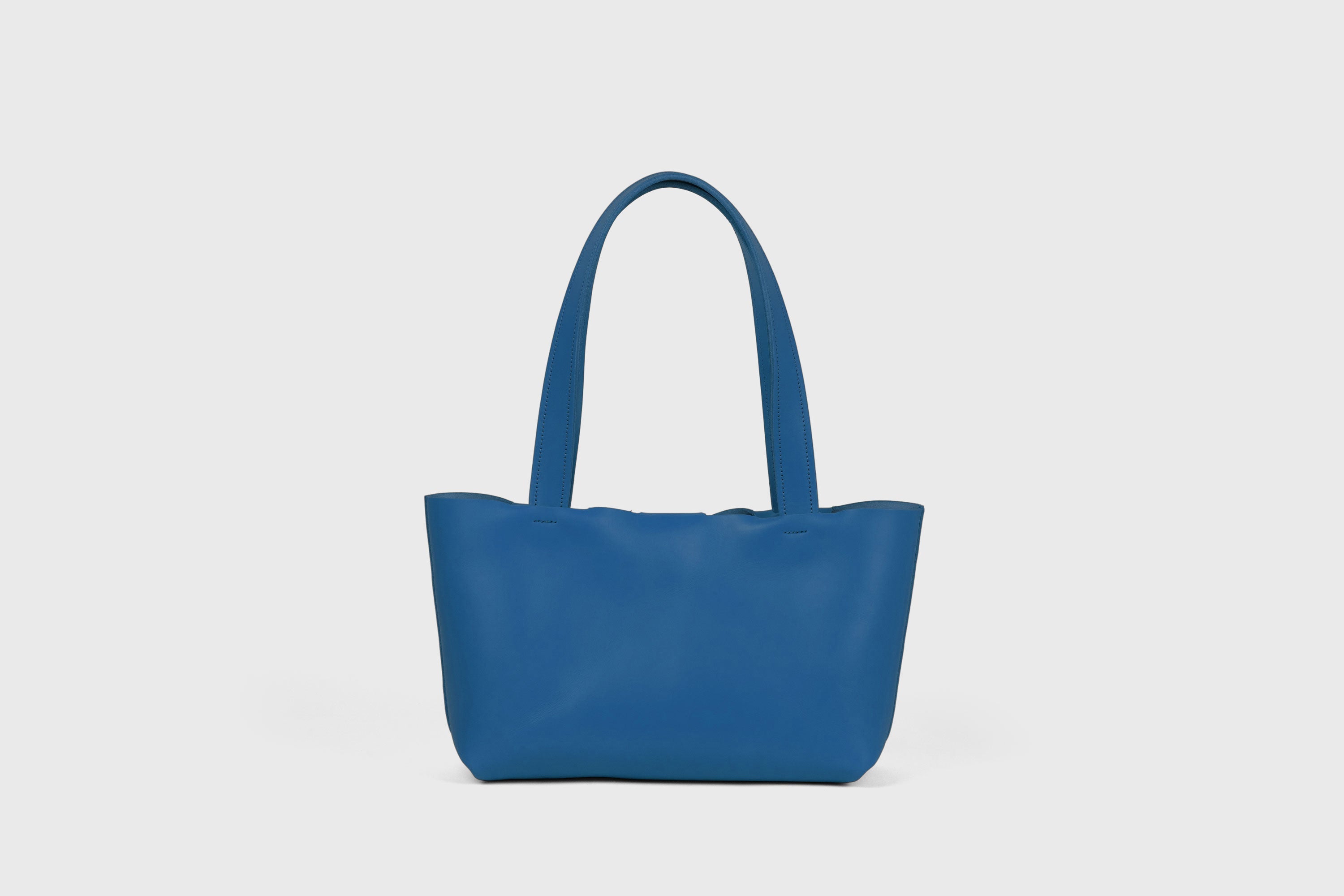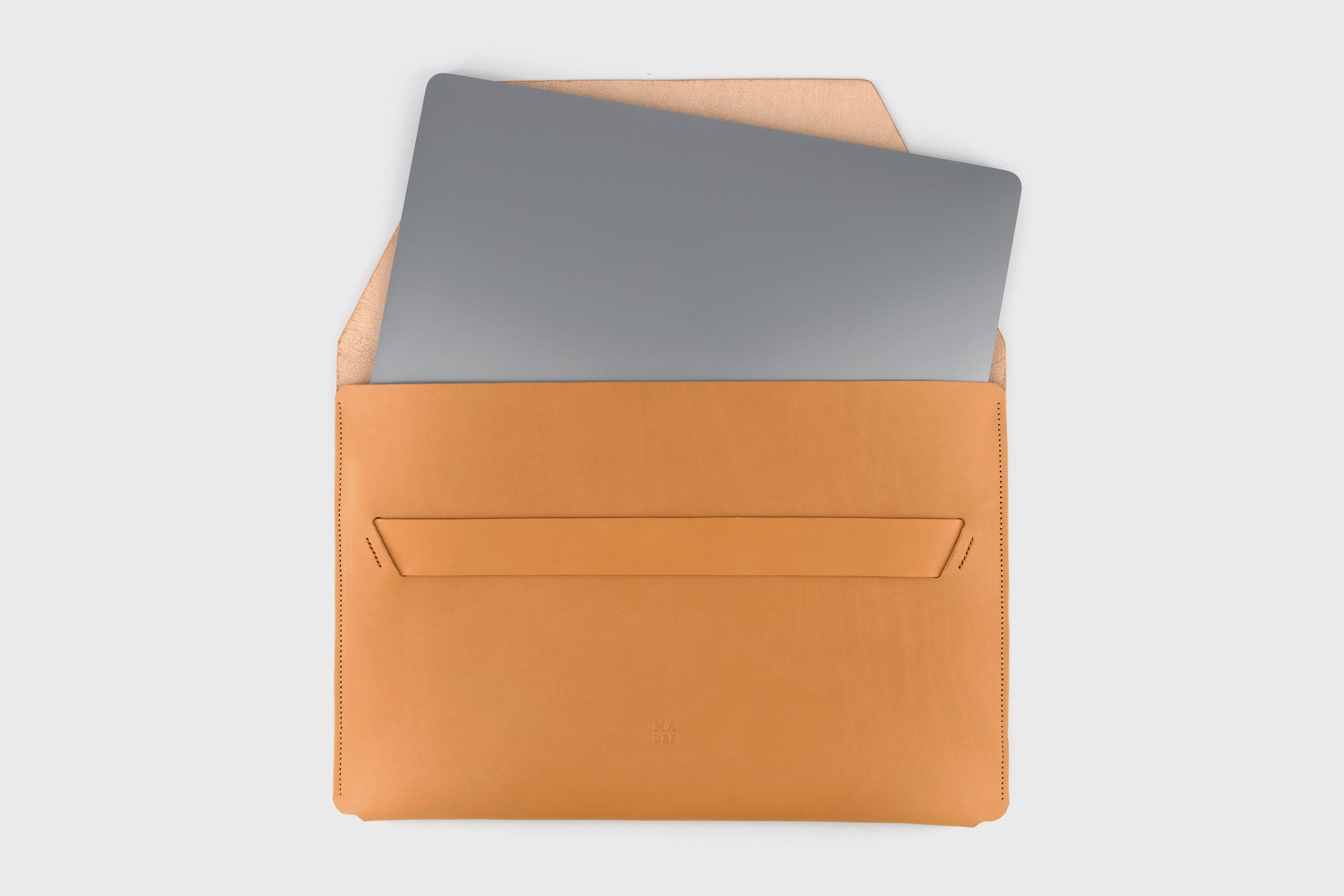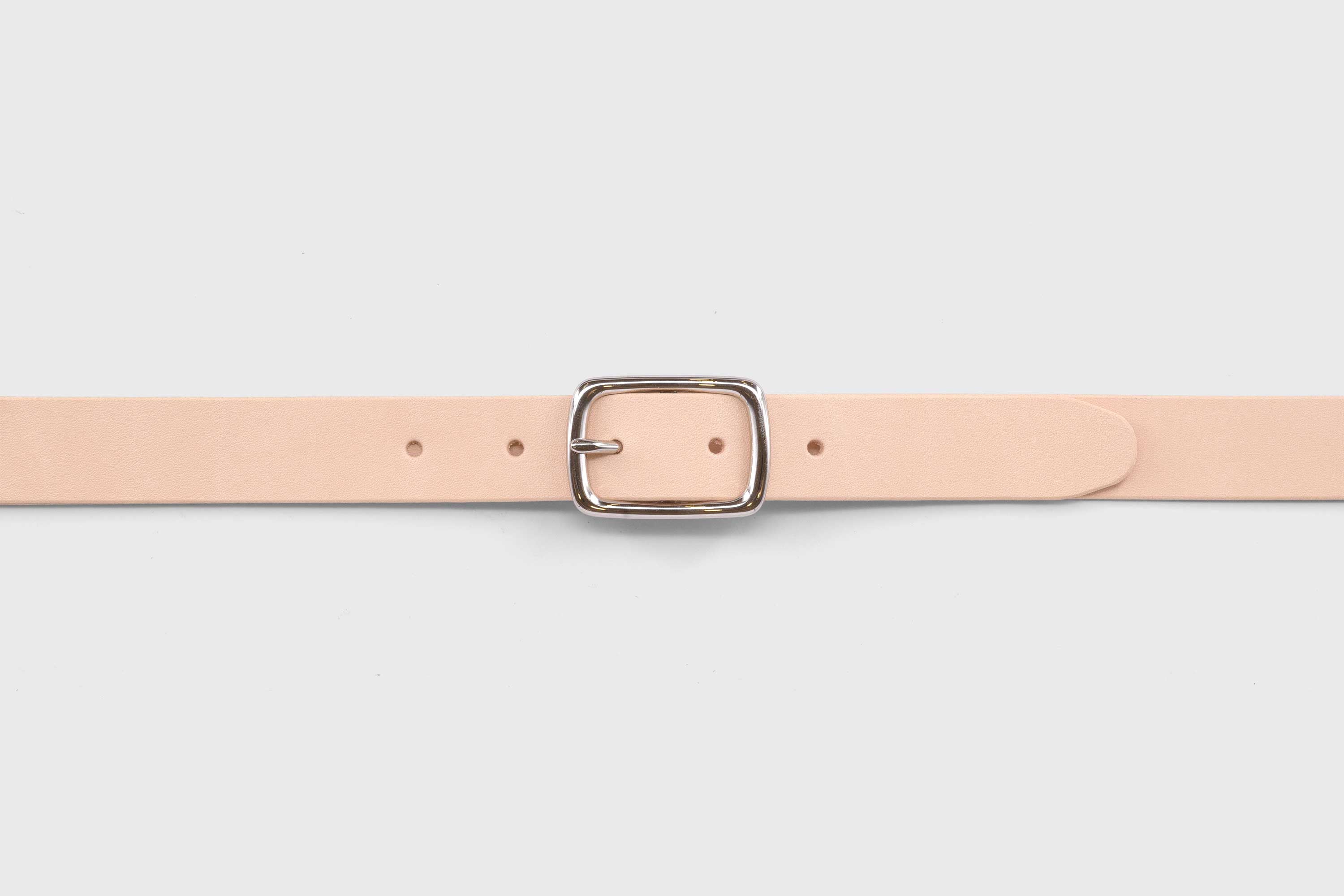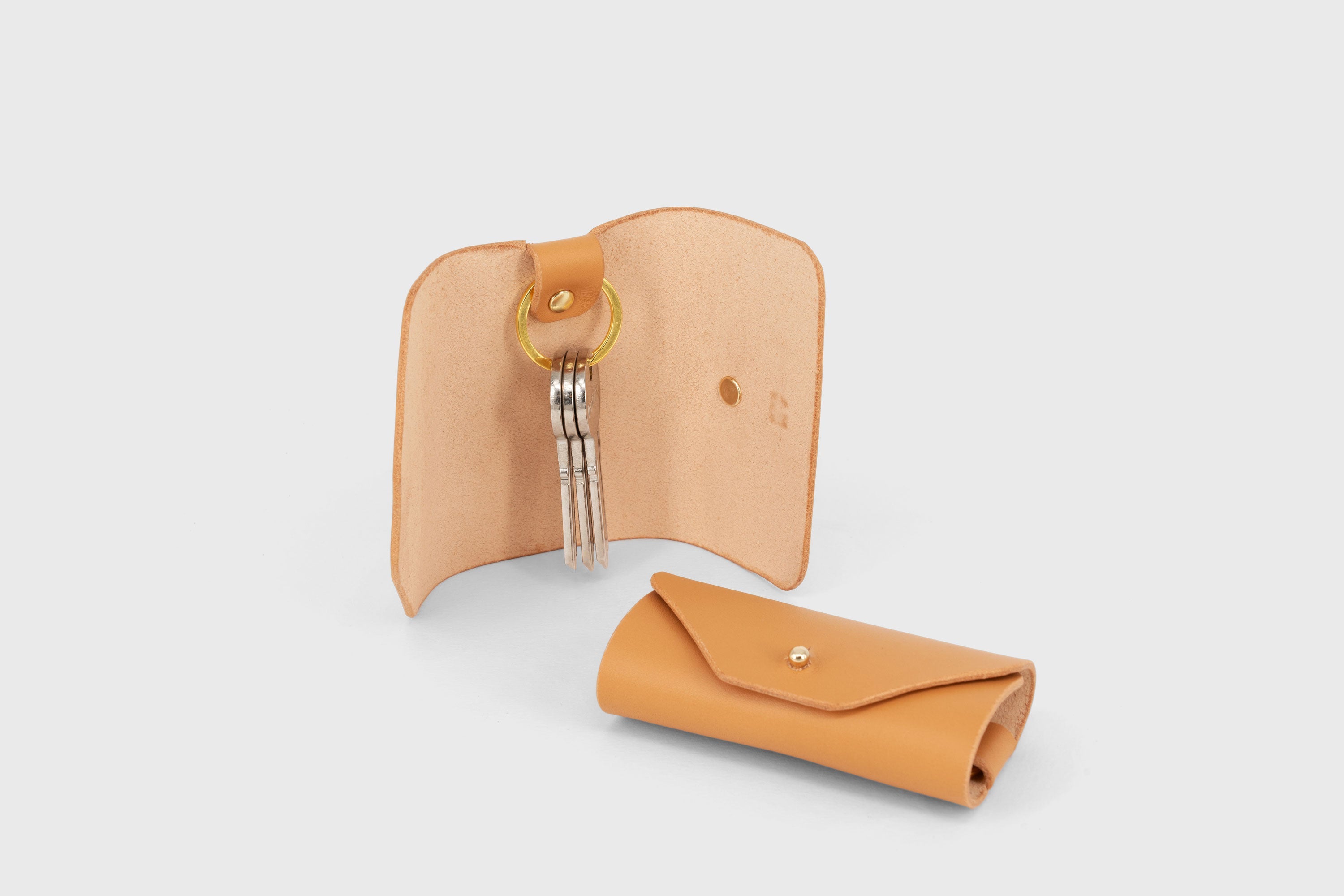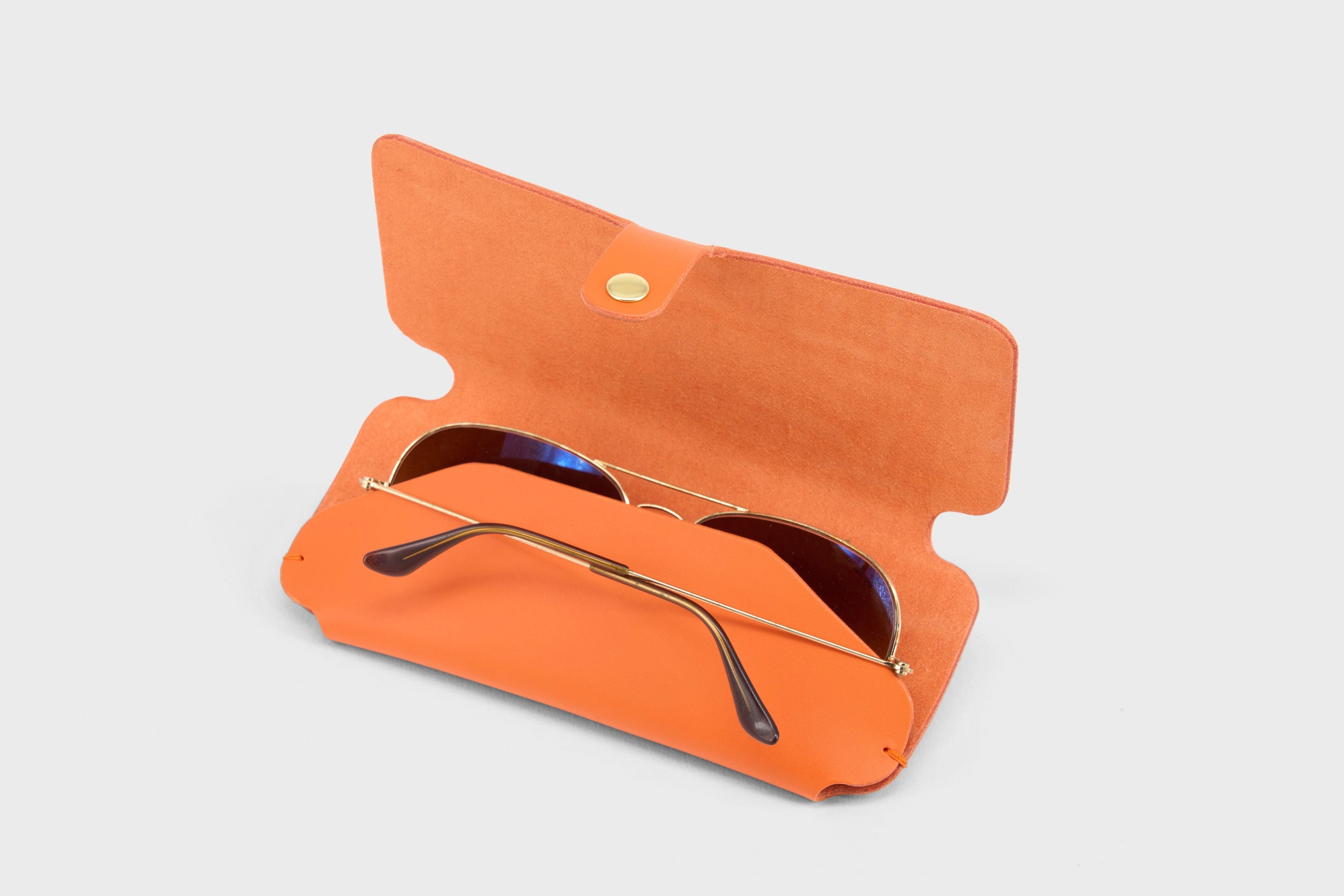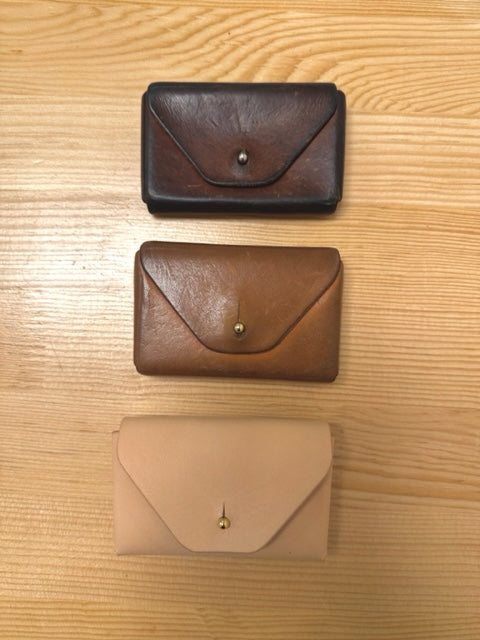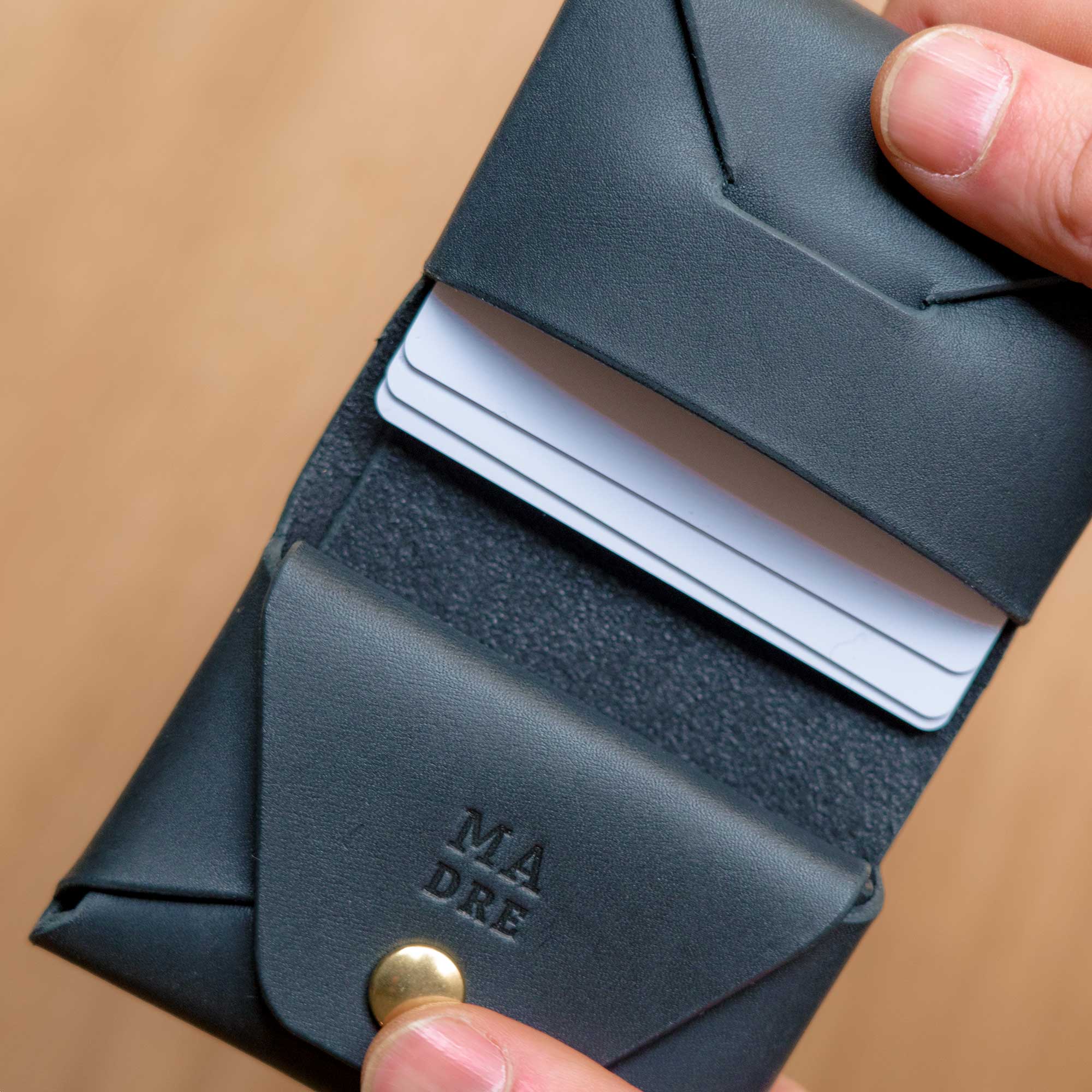
Leather terminologies - The ultimate list!
Starting out in the world of leatherwork can be a daunting task, especially when it comes to understanding the various terms and grains used in the trade. However, with practice and consistency, it is possible to become proficient in the field.
To effectively work with leather, it is essential to have a good understanding of the tools required for the job. These tools can include leather knives, punches, awls, and stitching needles, among others. With the right tools, leatherworkers can create intricate designs and shapes, bringing their ideas to life.
It is also important to have an understanding of the different leather grains and textures available. Full-grain leather, for example, is considered the highest quality leather, as it retains the natural texture and markings of the hide. Top-grain leather, on the other hand, is sanded and buffed to remove imperfections, resulting in a smooth surface.
Another important aspect of leatherworking is the different tanning methods used to prepare the hides. Vegetable tanning is a traditional method that uses natural tannins found in tree bark to produce a durable, environmentally friendly leather. Chrome tanning, on the other hand, uses chromium salts to create a soft, supple leather that is ideal for a range of applications.
By understanding these terms and techniques, consumers can make informed decisions when selecting leather products. Whether it's a leather jacket, bag, or shoes, knowing the difference between full-grain and top-grain leather, or the benefits of vegetable tanning versus chrome tanning, can help individuals choose only the highest-quality leather goods. So, take the time to explore the different leather terminologies and techniques and become an informed leather enthusiast.
A
-
Abrasion Resistance: The ability of leather to resist damage from rubbing or friction. Abrasion resistance is an important factor in the durability and longevity of leather goods, especially those that are subjected to regular wear and tear.
-
Adhesion: The ability of a substance to stick to the surface of leather. Adhesion is an important factor in the manufacturing of leather goods, as it determines the strength and durability of seams and other joinery.
-
Adhesive: A substance used to bond two materials together, often used in leatherworking. Adhesives can help to improve the durability of leather goods.
-
Air-Drying: The process of drying leather by allowing it to dry naturally in the air. Air-drying is a common method of drying leather goods that helps to preserve their natural texture and appearance.
-
Airbrushing: A technique used to apply color or designs to leather using an airbrush. Airbrushing can produce detailed, intricate designs on leather goods.
-
Alkaline: A pH level above 7, which can also cause damage to leather over time. Alkaline conditions can cause leather to become discolored and weakened, making it important to maintain a neutral pH level.
-
Alum Tanning: A tanning process that uses aluminum salts to produce a soft, white leather. Alum tanning is a traditional method of tanning that produces a leather that is often used in bookbinding and other specialized applications.
-
American Leather: A brand of leather that is known for its durability and quality. American Leather is often used in the production of high-end leather goods.
-
Anatomical Footbed: A contoured insole that provides support and comfort for the foot, often used in leather shoes. Anatomical footbeds are designed to provide arch support and cushioning, helping to reduce foot fatigue and discomfort.
-
Aniline Leather: A type of leather that is dyed with transparent dyes, allowing the natural grain and markings to show through. Aniline leather is known for its softness, suppleness, and natural appearance.
-
Antiquing: A finishing technique that gives leather an aged or distressed appearance. Antiquing can help to add character and uniqueness to leather goods.
-
Articulated: A term used to describe leather goods that are designed to move and bend with the body, such as leather jackets. Articulated designs can help to improve comfort and mobility.
-
Artisanal: A term used to describe leather goods that are made by hand using traditional techniques. Artisanal leather goods are often highly prized for their unique, high-quality craftsmanship.
-
Atmospheric Conditions: The temperature, humidity, and air quality of the environment, which can affect the quality and durability of leather. Leather should be stored in a cool, dry place to prevent damage from moisture and heat.
-
Automated Cutting: The process of using machines to cut leather into specific shapes and sizes. Automated cutting can help to increase efficiency and accuracy in leatherworking.
-
Automotive Leather: A type of leather that is used in the interiors of cars and other vehicles. Automotive leather is often treated to resist fading and wear, and is designed to be durable and easy to clean.
-
Awl: A pointed tool used to pierce or sew leather. The awl is an essential tool in leatherworking, used for making holes and stitching leather.
-
Acidic: A pH level below 7, which can cause damage to leather over time. Acidic conditions can cause leather to become brittle and crack, making it important to maintain a neutral pH level.
-
Astringent: A substance used in the tanning process to help preserve and strengthen leather. Astringents can help to improve the quality
B
-
Backing: A material that is applied to the back of leather to improve its strength and durability. Backing can help to prevent leather from stretching or tearing.
-
Belly Leather: A type of leather that comes from the belly of an animal, often used for less expensive leather goods. Belly leather is typically thinner and less durable than other types of leather.
-
Bicast Leather: A type of leather made from split leather that is coated with a layer of polyurethane or another synthetic material. Bicast leather is often used in the production of furniture and other high-wear items.
-
Binder: A substance used to hold the fibers of leather together during the tanning process. Binders can help to improve the strength and durability of leather.
-
Bridle Leather: A type of leather that is made using a traditional vegetable tanning process, resulting in a strong and durable leather that is often used for equestrian equipment.
-
Buffing: A process that involves lightly sanding the surface of leather to remove imperfections or blemishes. Buffing can help to improve the appearance and texture of leather.
-
Burnishing: A finishing technique that involves rubbing the edges of leather to smooth and polish them. Burnishing can help to improve the durability and appearance of leather goods.
-
Butt Leather: A type of leather that comes from the thickest part of an animal's hide, often used for heavy-duty leather goods such as saddles or belts.
-
Buckskin: A type of leather that is made from the skin of a deer or other game animal. Buckskin is known for its softness and durability, and is often used for gloves, clothing, and other high-end leather goods.
-
Bumper Leather: A type of leather that is used in the bumpers of pool tables. Bumper leather is known for its durability and ability to withstand repeated impacts.
-
Burnout Leather: A type of leather that is treated with chemicals to create a pattern or design on the surface. Burnout leather is often used for high-end fashion accessories.
-
Buttero Leather: A type of vegetable-tanned leather that is made in Tuscany, Italy. Buttero leather is known for its rich color and high quality, and is often used for luxury leather goods.
-
Bovine Leather: A type of leather that is made from the skin of cattle. Bovine leather is known for its strength and durability, and is often used for heavy-duty leather goods.
-
Brush-Off Leather: A type of leather that is finished with a topcoat that can be easily brushed off, revealing a different color or texture underneath. Brush-off leather is often used for high-end footwear.
-
Burnished Leather: A type of leather that is treated with wax or other substances to create a polished or glossy finish. Burnished leather is often used for dress shoes or other high-end leather goods.
-
Buffalo Leather: A type of leather that comes from the skin of a buffalo. Buffalo leather is known for its durability and strength, and is often used for heavy-duty leather goods.
-
Butt Split: A type of leather that is made by splitting the thick portion of an animal hide. Butt split leather is often used for heavy-duty leather goods such as belts and saddles.
-
Bungee Cord: A type of elastic cord that is often used in the production of leather goods such as bags and backpacks. Bungee cord can help to improve the functionality and ease of use of these items.
-
Buttonhole Leather: A type of leather that is used to reinforce the buttonholes on leather jackets or other leather goods. Buttonhole leather is known for its strength and durability.
C
-
Chrome Tanning: A tanning process that uses chromium salts to produce a soft and durable leather. Chrome tanning is the most common method of tanning used today.
-
Cordovan Leather: A type of leather made from the skin of a horse's rump. Cordovan leather is known for its durability and unique color, and is often used for high-end leather goods.
-
Creasing: A technique used to create decorative lines or patterns in leather by pressing a tool into the surface. Creasing can add texture and visual interest to leather goods.
-
Cross-Grain: A term used to describe leather that is cut against the grain, resulting in a different texture and appearance. Cross-grain leather is often used in the production of luxury leather goods.
-
Crocking: The transfer of dye from leather to other surfaces. Crocking can be a problem with certain types of leather, and can be prevented by proper finishing and dyeing techniques.
-
Cuticle: The outermost layer of skin on an animal, which is removed during the leather tanning process. The cuticle can affect the quality and appearance of leather.
-
Cuir Bouilli: A method of tanning leather that involves boiling it in water or other liquids to make it more durable and water-resistant. Cuir bouilli was a common tanning method in ancient times.
-
Custom Leather: Leather goods that are made to order or customized to fit a specific customer's needs. Custom leather goods are often highly prized for their uniqueness and quality.
-
Cyclodextrin: A substance used in the tanning process to improve the water resistance and durability of leather. Cyclodextrin can also help to reduce the environmental impact of leather production.
-
Calfskin: A type of leather that comes from the skin of a young calf. Calfskin is known for its softness and durability, and is often used for high-end leather goods.
-
Carving: A decorative technique used to create patterns or designs in leather by cutting or carving the surface. Carving can add texture and visual interest to leather goods.
-
Chamois Leather: A type of leather that is made from the skin of a chamois, a type of goat-antelope. Chamois leather is known for its softness and ability to absorb water, and is often used for cleaning and polishing.
-
Chevre Leather: A type of leather that is made from the skin of a goat. Chevre leather is known for its durability and strength, and is often used for luxury leather goods.
-
Collagen: The protein that makes up the fibers of skin and other connective tissues. Collagen is an important component of leather, and can affect its strength and durability.
-
Colorfastness: The ability of leather to maintain its color over time and exposure to sunlight or other environmental factors. Colorfastness is an important factor in the quality and durability of leather goods.
-
Cordwain: A term used to describe high-quality leather that is made from the skin of a goat or sheep. Cordwain leather is known for its durability and suppleness, and is often used for luxury leather goods.
-
Crust Leather: Leather that has been tanned but not finished or colored. Crust leather can be dyed or finished to meet the specific needs of the manufacturer.
-
Curing: The process of preserving animal hides by treating them with salt or other chemicals. Curing is an important step in the leather tanning process, as it helps to prevent decay and preserve the quality of the leather.
-
Currying: A finishing process that involves treating leather with oils, waxes, or other substances to improve its texture and appearance.
D
-
Drum-dyed: A dyeing process where the leather is immersed in a rotating drum filled with dye. This results in an even and deep color and is commonly used in high-end leather goods.
-
Dressing: A substance used to condition and protect leather, usually made from natural oils or waxes. Dressing helps improve the durability and appearance of leather goods.
-
Dyeing: The process of coloring leather using dyes or pigments. This can be done using different techniques and can significantly affect the quality and appearance of leather goods.
-
Distressed Leather: Leather that has been artificially aged to create a worn or vintage appearance. Distressed leather is commonly used in fashion leather goods such as jackets, bags, and belts.
-
Deerskin: A type of leather made from the skin of deer. Deerskin is known for its softness, durability, and natural grain patterns, making it ideal for clothing, gloves, and accessories.
-
Double Butted: Leather that is split into two layers to create a thinner and more flexible material. Double butted leather is often used in the production of footwear and bags.
-
Draw: A leatherworking tool used to create a straight and even line on leather. The tool is dragged along the surface to create a crease that can be used as a guide for stitching or cutting.
-
Drumming: A process that involves tumbling leather in a large drum to soften and condition it. Drumming helps to improve the texture, suppleness, and durability of leather.
-
Dyed Through: A term used to describe leather that has been colored throughout the entire thickness of the material. Dyed through leather is more resistant to fading and has a consistent color throughout.
-
Debossed Leather: Leather that has been stamped or pressed with a design or pattern to create a depressed or indented effect. Debossing is commonly used in leather goods such as wallets, belts, and bags.
-
Dipping: A process that involves immersing leather in a liquid solution, often used in the tanning process. Dipping helps to improve the texture and color of leather.
-
Drum Sanded: Leather that has been sanded using a rotating drum to create a smooth and uniform surface. Drum sanding is commonly used in the production of upholstery leather.
-
Durability: A measure of the ability of leather to withstand wear and tear, damage, and exposure to the elements. Durability is an essential factor in the quality and longevity of leather goods.
-
Dye Transfer: The transfer of dye from leather to other materials or surfaces, often caused by friction or moisture. Dye transfer can be prevented by using proper finishing and dyeing techniques.
-
Decorative Leather: Leather that has been treated with finishes, dyes, or other decorative techniques to enhance its appearance. Decorative leather is commonly used in fashion leather goods such as bags, jackets, and shoes.
-
Dutch-Processed Leather: A type of leather that has been treated with chemicals to improve its water resistance and durability. Dutch-processed leather is commonly used in footwear and other outdoor leather goods.
-
Defects: Imperfections or flaws in leather, such as scars, stretch marks, or blemishes. Defects can affect the quality and appearance of leather goods and are often sorted and graded during the production process.
-
Deep-Pile Leather: Leather that has been finished with a surface texture that resembles fur or hair. Deep-pile leather is commonly used in fashion leather goods such as jackets and bags.
E
-
Embossing: A technique used to create decorative designs or patterns in leather by stamping or pressing the surface. Embossing can add texture and visual interest to leather goods.
-
Engraving: A technique used to create decorative designs or patterns in leather by cutting or engraving the surface. Engraving can add texture and visual interest to leather goods.
-
Exotic Leather: Leather that comes from unusual or rare animals, such as snakes, alligators, or ostriches. Exotic leather is often highly prized for its unique appearance and texture.
-
Edging: A leatherworking technique used to smooth and finish the edges of a piece of leather. Edging can help to prevent fraying and give leather goods a more polished appearance.
-
Edge Creaser: A leatherworking tool used to create a crease or groove along the edge of a piece of leather. The crease can be used as a guide for stitching or other joinery.
-
Elastic Leather: A type of leather that has been treated with a special finish to give it elasticity and flexibility. Elastic leather is commonly used in footwear and other applications where flexibility is required.
-
Embossed Leather: Leather that has been stamped or pressed with a design or pattern. Embossing can add texture and visual interest to leather goods.
-
End Use: The intended purpose or application of a leather product, such as shoes, bags, or upholstery. Understanding the end use of leather can help to determine the most suitable type and quality of leather to use.
-
European Leather: A term used to describe leather that has been produced in Europe, often with a higher standard of quality and craftsmanship. European leather is often associated with luxury and high-end leather goods.
-
Excess Flesh: The layer of fat and tissue that is removed from the underside of an animal hide during the leather production process. Excess flesh is often discarded or used in other applications such as fertilizer or pet food.
-
Exotic Skin Leather: Leather that comes from exotic animals such as crocodiles, snakes, and ostriches. Exotic skin leather is known for its unique texture and appearance and is often used in high-end fashion leather goods.
-
Extracted Leather: Leather that has been treated with chemicals to remove the hair and flesh from the hide. Extracted leather is often used in the production of rawhide or other leather products that require a stiffer texture.
-
Eyelet: A small metal or plastic ring used to reinforce a hole in leather or other materials. Eyelets are commonly used in the production of shoes, boots, and other leather goods.
-
Edge Paint: A type of paint or finish used to color and protect the edges of leather. Edge paint can help to prevent fraying and give leather goods a more finished appearance.
-
Eco-Friendly Leather: Leather that has been produced using environmentally friendly methods and materials. Eco-friendly leather production can help to reduce waste and pollution associated with the leather industry.
-
Embossed Crocodile: Leather that has been embossed with a pattern resembling the texture of crocodile skin. Embossed crocodile leather is often used in the production of luxury leather goods.
-
Elasticized Leather: Leather that has been treated with a special finish to give it elasticity and flexibility. Elasticized leather is commonly used in footwear and other applications where flexibility is required.
-
Embossed Cowhide: Leather that has been embossed with a pattern resembling the texture of cowhide. Embossed cowhide leather is often used in the production of upholstery leather goods.
F
-
Finish: A coating or treatment applied to the surface of leather to enhance its appearance, durability, and water resistance. Finishes can be matte, glossy, or semi-glossy.
-
Full-Grain Leather: Leather that has not been sanded, buffed, or corrected in any way, retaining its natural grain pattern and texture. Full-grain leather is the highest quality and most durable type of leather.
-
Fleshing: The process of removing the flesh and fat from the underside of an animal hide during leather production. Fleshing helps to prepare the hide for further processing.
-
Fatliquoring: A process that involves adding oils, greases, or other fats to leather to make it more flexible, soft, and supple. Fatliquoring is an essential step in the leather tanning process.
-
French Binding: A leatherworking technique used to finish the edges of a piece of leather by folding it over and stitching it down. French binding gives leather goods a more polished appearance.
-
Flocking: A decorative technique that involves applying small fibers or particles to the surface of leather using an adhesive. Flocking can add texture and visual interest to leather goods.
-
Flaw: An imperfection or blemish in leather, such as a scar, stretch mark, or discoloration. Flaws can affect the quality and appearance of leather goods.
-
Fiebing's Leather Dye: A popular brand of leather dye that is known for its high-quality and vibrant colors. Fiebing's leather dye is commonly used in the production of leather goods such as shoes, bags, and belts.
-
Fringe Leather: Leather that has been cut into thin strips or tassels along the edge to create a decorative fringe. Fringe leather is commonly used in fashion leather goods such as jackets and bags.
-
Firebranding: A decorative technique that involves burning a design or pattern into leather using a hot metal stamp. Firebranding can create unique and intricate designs in leather goods.
-
Fillet of Leather: A thin, flexible strip of leather that is often used in the production of shoe uppers or other leather goods that require flexibility.
-
Finish Break: A term used to describe the natural creasing or cracking that occurs in leather over time. Finish break is a normal part of the aging process for leather goods.
-
Flesh Split: The lower layer of leather that is obtained by splitting the hide into two layers. Flesh split is often used in the production of suede or other types of leather that require a soft texture.
-
Flap: A leather component that covers or protects an opening on a leather good, such as a pocket or zipper. Flaps can be decorative or functional.
-
Fur Leather: Leather that has been treated with a special finish to give it the appearance of fur. Fur leather is commonly used in fashion leather goods such as jackets and bags.
-
Fretwork: A decorative technique that involves cutting intricate designs or patterns into leather using a sharp tool or blade. Fretwork can add visual interest to leather goods.
-
Fatliquor: A substance used to add oils, greases, or other fats to leather to make it more flexible, soft, and supple. Fatliquor is an essential component in the leather tanning process.
-
Fisheye: A term used to describe a small circular spot or blemish on the surface of leather caused by contamination or other factors. Fisheyes can affect the quality and appearance of leather goods.
G
-
Grading: The process of sorting and categorizing leather based on quality, appearance, and other factors. Grading helps to ensure consistent quality in leather goods.
-
Grain: The outermost layer of an animal hide, which is used to make leather. The grain can vary in texture and appearance depending on the animal and tanning process.
-
Grommet: A small metal or plastic ring used to reinforce a hole in leather or other materials. Grommets are commonly used in the production of shoes, boots, and other leather goods.
-
Glazed Leather: Leather that has been treated with a special finish to create a shiny or glossy appearance. Glazed leather is often used in fashion leather goods such as handbags and belts.
-
Gilding: A decorative technique that involves applying gold leaf or gold-colored paint to the surface of leather. Gilding can add a luxurious and ornate touch to leather goods.
-
Grainside: The side of leather that has the natural grain pattern and texture. The grainside is typically used as the outer surface of leather goods.
-
Gouge: A leatherworking tool used to cut or scrape leather, typically used to create decorative or functional designs.
-
Gusset: A leather component that is added to the sides or bottom of a leather good to create extra space or volume. Gussets can be decorative or functional.
-
Glazing: A leather finishing technique that involves applying a glossy or shiny finish to the surface of leather using heat and pressure.
-
Genuine Leather: A term used to describe leather that is made from the lower layers of an animal hide. Genuine leather is often lower in quality and durability compared to full-grain leather.
-
Grindery: A term used to describe the tools and equipment used in the leatherworking trade, such as knives, punches, and sewing machines.
-
Grain Leather: A term used to describe leather that has retained its natural grain pattern and texture. Grain leather is typically of higher quality and durability compared to other types of leather.
-
Glue: A substance used to bond pieces of leather together or attach leather to other materials. Glues can be made from natural or synthetic materials and vary in strength and durability.
-
Gaiter Leather: A type of leather that is used to make gaiters, a type of protective covering worn over shoes or boots. Gaiter leather is typically treated with special finishes to make it more water-resistant and durable.
-
Grain Side Leather: A term used to describe the side of leather that has the natural grain pattern and texture. Grain side leather is typically used as the outer surface of leather goods.
-
Goat Leather: A type of leather that is made from the skin of goats. Goat leather is known for its softness, durability, and natural grain patterns, making it ideal for clothing, gloves, and accessories.
-
Green Hide: An animal hide that has been recently removed from the animal and has not yet been treated or tanned. Green hides are highly perishable and must be processed quickly.
-
Graining: A decorative technique that involves stamping or embossing a pattern onto the surface of leather to create a textured effect. Graining can add visual interest to leather goods.
-
Grease Leather: A type of leather that has been treated with a special grease finish to give it a soft and supple texture. Grease leather is commonly used in the production of gloves and other accessories.
H
-
Hide: The skin of an animal that has been removed and processed for use in leather production. Hides can come from a variety of animals, including cows, goats, and sheep.
-
Harness Leather: A type of leather that is used to make straps, belts, and other items that require strength and durability. Harness leather is typically treated with special finishes to make it more water-resistant and durable.
-
Hot Stamping: A leatherworking technique that involves using a hot metal stamp to imprint a design or pattern onto the surface of leather. Hot stamping can create intricate and detailed designs in leather goods.
-
Haircell Leather: A type of leather that has a distinctive raised texture resembling hair cells. Haircell leather is often used in the production of automotive interiors and upholstery.
-
Handbag Leather: A type of leather that is used to make handbags and other accessories. Handbag leather is typically treated with special finishes to make it more water-resistant and durable.
-
Hemming: A leatherworking technique that involves folding and stitching the edges of a piece of leather to create a finished edge. Hemming can help to prevent fraying and give leather goods a more polished appearance.
-
Hideside: The side of leather that has the natural grain pattern and texture. The hideside is typically used as the outer surface of leather goods.
-
Horween Leather: A type of leather that is produced by the Horween Leather Company in Chicago, known for its high-quality and durability. Horween leather is often used in high-end leather goods such as shoes and bags.
-
Hydrator: A leatherworking tool used to add moisture to leather, making it more pliable and easier to work with. Hydrators are commonly used in the leather tanning process.
-
Head Leather: A type of leather that is made from the skin of an animal's head. Head leather is typically more durable and less stretchy than other types of leather.
-
Herringbone Leather: A type of leather that has a distinctive pattern resembling a herringbone. Herringbone leather is often used in the production of high-end leather goods such as jackets and bags.
-
Heel Grip Leather: A type of leather that is used to line the inside of shoes or boots to prevent slipping and provide additional support. Heel grip leather is typically treated with special finishes to make it more water-resistant and durable.
-
Hand-Grain Leather: A type of leather that has been sanded or buffed to create a unique, textured appearance. Hand-grain leather is often used in high-end leather goods such as shoes and bags.
-
Hot Stuffing: A leather tanning process that involves adding oils, greases, or other fats to leather to make it more flexible, soft, and supple. Hot stuffing is an essential step in the leather tanning process.
-
Hideshop: A term used to describe a workshop or factory where hides are processed into leather goods. Hideshops may specialize in different types of leather or leather products.
-
High-Grain Leather: A type of leather that has been sanded or buffed to create a smooth, even appearance. High-grain leather is often used in the production of shoes and other leather goods.
-
Heavy Leather: A type of leather that is thicker and more durable than other types of leather. Heavy leather is often used in the production of saddles, belts, and other items that require strength and durability.
-
Hide Glue: A type of glue made from animal hides and used in the leatherworking trade. Hide glue is known for its strength and durability and is commonly used in the production of leather goods.
I
-
Insole: A component of a shoe or boot that is placed inside the shoe and provides cushioning and support for the foot. Insoles can be made from a variety of materials, including leather.
-
Imitation Leather: A type of synthetic material that is designed to look and feel like leather. Imitation leather can be made from a variety of materials, including PVC and polyurethane.
-
Italian Leather: A type of leather that is produced in Italy and known for its high quality and durability. Italian leather is often used in high-end leather goods such as shoes, bags, and jackets.
-
Inverted Leather: A type of leather that is processed with the grain side facing inward, creating a unique texture and appearance. Inverted leather is often used in the production of high-end leather goods such as handbags and wallets.
-
Ironing: A leatherworking technique that involves using a heated iron to smooth out wrinkles and creases in leather. Ironing can help to create a more polished appearance in leather goods.
-
Insolvent: A term used to describe a tanning process in which solvents are used to dissolve and remove the fats and oils from animal hides. Insolvent tanning can be faster and more efficient than other types of tanning processes.
-
Ivory Leather: A type of leather that has a creamy white color, resembling the color of ivory. Ivory leather is often used in the production of high-end leather goods such as handbags and shoes.
-
Irish Leather: A type of leather that is produced in Ireland and known for its high quality and durability. Irish leather is often used in the production of shoes and other leather goods.
-
Ingrain Leather: A type of leather that has been treated with a special dye to create a uniform color throughout the leather. Ingrain leather is often used in the production of leather furniture and upholstery.
-
Inlay: A decorative technique that involves cutting out a design or pattern in leather and inserting another piece of leather or material into the cutout. Inlay can add visual interest and texture to leather goods.
-
Insoluble Dyes: A type of dye that is used to color leather and is resistant to water and other solvents. Insoluble dyes are commonly used in the leather tanning process.
-
Ink-Resistant Leather: A type of leather that has been treated with a special finish to make it more resistant to ink stains. Ink-resistant leather is often used in the production of leather goods such as wallets and briefcases.
-
Interlining: A component of a leather good that is placed between the outer leather layer and the inner lining layer. Interlining can provide additional structure and support to leather goods.
-
Inverted Seam: A leatherworking technique that involves stitching two pieces of leather together with the seams facing outward, creating a decorative and unique effect.
-
Iron Leather: A type of leather that has been treated with heat and pressure to create a smooth and glossy appearance. Iron leather is often used in the production of high-end leather goods such as handbags and shoes.
-
Intarsia Leather: A type of leatherworking technique that involves inlaying small pieces of leather into a larger piece to create a decorative design or pattern. Intarsia leather is often used in the production of leather accessories and clothing.
-
Intermingled Leather: A type of leather that is made by interweaving strips of leather to create a unique and textured appearance. Intermingled leather is often used in the production of high-end leather goods such as handbags and shoes.
-
Inside Out Leather: A type of leather that is processed with the grain side facing inward, creating a unique texture
J
-
Jacket: A piece of clothing made from leather that is worn over the upper body. Leather jackets can be made from a variety of different leather types, and are often associated with motorcycle culture.
-
Jockey: A term used to describe a type of leather that is soft and pliable, and typically used for saddle-making. Jockey leather is often made from cowhide or kangaroo hide.
-
Journal: A type of leather notebook or diary that is bound in leather covers. Leather journals are often used for personal reflection or as a decorative accessory.
-
Jute: A type of natural fiber that is commonly used in the leather industry as a backing material for leather goods. Jute is known for its strength and durability.
-
Juvenile Leather: A term used to describe a type of leather that is specifically designed for use in children's shoes and other leather goods. Juvenile leather is typically treated with special finishes to make it more resistant to wear and tear.
K
-
Kipskin: A type of leather that is made from the skin of a young or small cow. Kipskin is known for its softness and flexibility, and is often used in the production of shoes and gloves.
-
Kangaroo Leather: A type of leather that is made from the skin of a kangaroo. Kangaroo leather is known for its strength, durability, and flexibility, and is often used in the production of high-end sports equipment such as soccer cleats.
-
Knife Sheath: A protective cover for a knife made from leather. Knife sheaths are often made from thick, durable leather and can be designed to fit a specific type of knife.
-
Kevlar Thread: A type of thread that is made from Kevlar fibers, which are known for their strength and durability. Kevlar thread is often used in the production of leather goods such as bags and wallets.
-
Kip Leather: A type of leather that is made from the skin of a young or small cow. Kip leather is known for its softness and flexibility, and is often used in the production of shoes and gloves.
-
Kid Leather: A type of leather that is made from the skin of a young goat. Kid leather is known for its softness and fine grain, and is often used in the production of gloves and other accessories.
-
Karung Leather: A type of leather that is made from the skin of a snake known as the karung. Karung leather is known for its unique texture and pattern, and is often used in the production of luxury handbags and shoes.
-
Kudu Leather: A type of leather that is made from the skin of a kudu, a type of antelope found in Africa. Kudu leather is known for its durability and unique texture, and is often used in the production of shoes and other accessories.
-
Keratin: A protein that is found in animal skin, hair, and nails, and is the primary component of leather. Keratin gives leather its strength, durability, and unique properties.
-
Krause Lacing: A type of leatherworking technique that involves lacing two pieces of leather together using a series of loops and knots. Krause lacing is often used in the production of leather goods such as wallets and bags.
-
Kips: A term used to describe the skin of a young or small cow, which is often used in the production of soft, flexible leather goods such as shoes and gloves.
-
Kinoko Leather: A type of leather that is made from the skin of a mushroom known as the Phellinus linteus. Kinoko leather is known for its unique texture and is often used in the production of high-end fashion accessories.
-
Kip Side: The side of leather that has the natural grain pattern and texture, taken from the skin of a young or small cow. The kip side is typically used as the outer surface of leather goods.
-
Kilim Rug Leather: A type of leather that is made by weaving small pieces of leather together to create a textured and unique appearance. Kilim rug leather is often used in the production of handbags and other accessories.
-
Kickers Leather: A type of leather that is specially treated to make it more durable and resistant to wear and tear. Kickers leather is often used in the production of shoes and other leather goods that require a high degree of durability.
-
Kip Butt: The area of the cow's skin that includes the tail and rump, and is often used in the production of soft, flexible leather goods such as shoes and gloves.
L
-
Lambskin: A type of leather that is made from the skin of a young sheep. Lambskin is known for its softness and fine grain, and is often used in the production of high-end fashion accessories.
-
Leather: A material that is made from the skin of animals such as cows, goats, and sheep. Leather is known for its durability, strength, and unique properties, and is used in a wide range of products such as clothing, footwear, and upholstery.
-
Leatherette: A type of synthetic material that is designed to look and feel like leather. Leatherette can be made from a variety of materials, including PVC and polyurethane.
-
Leatherworking: The practice of working with leather to create a variety of products, such as clothing, footwear, and accessories. Leatherworking can involve a variety of techniques such as cutting, stitching, and dyeing.
-
Lining: A component of a leather good that is placed on the inside of the outer leather layer. Lining can provide additional structure and support to leather goods, and can also help to protect the interior of the product.
-
Lizard Leather: A type of leather that is made from the skin of a lizard. Lizard leather is known for its unique texture and pattern, and is often used in the production of luxury handbags and shoes.
-
Loom: A machine used in the leather industry to weave fibers together to create a variety of materials such as fabrics and textiles.
-
Leather Tanning: The process of treating animal hides with chemicals to turn them into leather. Tanning can involve a variety of techniques such as vegetable tanning and chrome tanning, and can have a significant impact on the quality and properties of the leather.
-
Leather Grain: The pattern of the natural fibers on the surface of leather. Leather can have a variety of grain patterns, such as pebble grain and smooth grain, which can impact the appearance and texture of the leather.
-
Leather Dyeing: The process of coloring leather using various types of dyes. Leather can be dyed in a variety of colors, and the dyeing process can have an impact on the durability and texture of the leather.
-
Leather Care: The process of maintaining and cleaning leather goods to keep them in good condition. Leather care can involve a variety of techniques such as conditioning and polishing.
-
Leather Belt: A type of clothing accessory made from leather that is worn around the waist to hold up pants or other clothing items. Leather belts can be made from a variety of leather types and can be decorated with buckles and other embellishments.
-
Leather Jacket: A type of clothing item made from leather that is worn over the upper body. Leather jackets can be made from a variety of different leather types and are often associated with motorcycle culture.
-
Leather Wallet: A type of accessory made from leather that is used to hold credit cards, cash, and other small items. Leather wallets can be made from a variety of different leather types and can be designed in a variety of styles.
-
Leather Shoes: A type of footwear made from leather. Leather shoes can be made from a variety of different leather types and can be designed for a variety of purposes such as athletic activities or formal events.
-
Leatherworking Tools: The various tools used in leatherworking such as knives, needles, and thread. These tools can be used for a variety of techniques such as cutting, stitching, and shaping leather.
-
Leather Handbag: A type of accessory made from leather that is used to carry personal items such as a wallet, keys, and a phone. Leather handbags can be made from a variety of different leather types and can be designed in a variety
M
-
Madras Leather: A type of leather that has a unique pebble texture and is often used in the production of handbags and shoes.
-
Metallic Leather: A type of leather that has been coated with a thin layer of metal to give it a shiny and reflective appearance. Metallic leather is often used in the production of fashion accessories.
-
Mocassin Leather: A type of leather that is traditionally used in the production of moccasins. Mocassin leather is soft and supple, and is often used in the production of other footwear and accessories.
-
Moonlighting: A technique used in leather finishing to create a two-tone effect on the surface of the leather. This effect is created by applying two different shades of dye to the leather.
-
Mottling: A technique used in leather finishing to create a mottled or speckled effect on the surface of the leather. This effect is created by applying different shades of dye to the leather in a random pattern.
-
Mouflon Leather: A type of leather that is made from the skin of a mouflon, a type of wild sheep found in Europe and Asia. Mouflon leather is known for its strength and durability.
-
Multitasking Leather: A type of leather that has been treated to make it resistant to scratches, water, and other types of damage. Multitasking leather is often used in the production of bags and other accessories.
-
Museum Calf: A type of leather that has been treated to give it a polished, glossy appearance. Museum calf is often used in the production of high-end footwear and leather goods.
-
Must Leather: A type of leather that has been treated with a mixture of oil and wax to give it a smooth and shiny appearance. Must leather is often used in the production of luxury handbags and accessories.
-
Myrtle Leather: A type of leather that is made from the skin of a myrtle tree. Myrtle leather is known for its strength and durability, and is often used in the production of bags and other accessories.
-
Matte Finish: A type of finish used in leather finishing that gives the leather a dull or matte appearance. Matte finishes are often used in the production of casual or vintage-style leather goods.
-
Microfiber Leather: A synthetic leather alternative that is made from ultrafine fibers. Microfiber leather is often used in the production of vegan and eco-friendly leather goods.
-
Metallic Foil: A type of decorative foil that is applied to leather to give it a metallic or shiny appearance. Metallic foil is often used in the production of high-end leather goods such as handbags and wallets.
-
Microsuede Leather: A type of synthetic leather that has a texture similar to suede. Microsuede leather is often used in the production of vegan and eco-friendly leather goods.
-
Microcrystalline Wax: A type of wax used in leather finishing to give the leather a glossy and protective finish. Microcrystalline wax is often used in combination with other waxes and oils to create a customized finish.
-
Micro-Perforation: A technique used in leatherworking to create small perforations in the surface of the leather. Micro-perforation is often used to create a decorative effect or to improve the breathability of the leather.
-
Mineral-Tanned Leather: A type of leather that has been tanned using mineral salts such as chrome. Mineral-tanned leather is known for its durability and resistance to water and other types of damage.
-
Milled-Grain Leather: A type of leather that has been treated to create a uniform grain pattern. Milled-grain leather is often used in the production of handbags, wallets
N
-
Nap: The texture of leather or fabric when fibers are raised on the surface, creating a soft and fuzzy feel. Nap is often desired in leather goods such as suede jackets and shoes.
-
Nappa Leather: A type of leather that is made from the skin of lamb or sheep. Nappa leather is known for its softness and fine grain, and is often used in the production of luxury leather goods.
-
Natural Leather: Leather that has been tanned using only natural materials such as tree bark and vegetable matter. Natural leather is often preferred by those who are concerned about the environmental impact of leather production.
-
Navel Leather: Leather that is made from the skin of the belly area of a cow. Navel leather is known for its strength and durability, and is often used in the production of work boots and other heavy-duty leather goods.
-
Needle Felting: A technique used in leatherworking to create 3D designs on leather by felting wool fibers into the surface of the leather.
-
Negrara Leather: A type of leather that is made from the skin of a breed of sheep found in northern Italy. Negrara leather is known for its softness and fine grain, and is often used in the production of luxury leather goods.
-
Nickel-Free Leather: A type of leather that has been treated to remove nickel, a common allergen. Nickel-free leather is often used in the production of accessories such as belts and watch bands.
-
Nitrile Rubber Sole: A type of sole used in the production of shoes and boots that is made from a synthetic rubber material known for its durability and slip resistance.
-
Non-Woven Fabric: A type of fabric used in the production of leather goods such as handbags and wallets. Non-woven fabric is made by bonding fibers together with heat or adhesive, creating a strong and durable material.
-
Nubuck Leather: A type of leather that has been sanded on the surface to create a velvety texture. Nubuck leather is known for its softness and is often used in the production of high-end fashion accessories.
-
Nylon Thread: A type of thread that is made from nylon fibers, which are known for their strength and durability. Nylon thread is often used in the production of leather goods such as bags and wallets.
-
Nymo Thread: A type of thread that is made from nylon and is known for its strength and durability. Nymo thread is often used in the production of leather goods such as bags and wallets.
-
Natural Dye: A type of dye that is made from natural materials such as plant extracts and minerals. Natural dyes are often used in the production of high-end leather goods.
-
Natural Grain: The unique grain pattern that is naturally present in leather. Natural graining is often desired in high-end leather goods such as jackets and handbags.
-
Natural Veg-Tan Leather: A type of leather that is tanned using only natural materials such as tree bark and vegetable matter. Natural veg-tan leather is often used in the production of high-end leather goods.
-
Navy Leather: A type of leather that is dyed a deep navy blue color. Navy leather is often used in the production of luxury handbags and shoes.
-
Neoprene Rubber: A type of synthetic rubber that is often used in the production of shoe soles and other rubber products. Neoprene rubber is known for its durability and resistance to water and other types of damage.
-
Novelty Leather: Leather that has been treated or decorated to create a unique and eye-catching appearance. Novelty leather is often used in the production of high-end fashion accessories.
O
-
Oiled Leather: Leather that has been treated with oil to make it more water-resistant and durable. Oiled leather is often used in the production of work boots and other heavy-duty leather goods.
-
Oilskin Leather: A type of leather that has been treated with oil to make it water-resistant. Oilskin leather is often used in the production of outdoor clothing and accessories.
-
Open-Pore Leather: Leather that has been treated to leave the pores on the surface open. Open-pore leather is often used in the production of high-end leather goods such as jackets and handbags.
-
Overstitching: A technique used in leatherworking to create a decorative stitch that runs along the edge of a piece of leather. Overstitching is often used in the production of bags and wallets.
-
Offset Print: A type of print used in leather finishing that creates a pattern with a 3D effect. Offset printing is often used to create designs on leather goods such as belts and wallets.
-
Ostrich Leather: Leather that is made from the skin of an ostrich. Ostrich leather is known for its unique pattern of bumps and is often used in the production of high-end fashion accessories.
-
Organic Leather: Leather that has been produced using only organic and natural materials. Organic leather is often preferred by those who are concerned about the environmental impact of leather production.
-
Oxhide Leather: Leather that is made from the skin of an ox or cow. Oxhide leather is known for its strength and durability, and is often used in the production of work boots and other heavy-duty leather goods.
-
Oxblood Leather: Leather that is dyed a deep red color known as oxblood. Oxblood leather is often used in the production of high-end leather goods such as handbags and shoes.
-
Off-Cut Leather: Leather that is leftover from the production of other leather goods. Off-cut leather is often sold at a discounted price and can be used in the production of smaller leather goods such as wallets and keychains.
-
One-Piece Leather: Leather that is cut from a single piece of hide, without any seams or stitching. One-piece leather is often used in the production of high-end leather goods such as handbags and wallets.
-
Oil Pull-Up Leather: Leather that has been treated with oils and waxes to create a distressed and vintage appearance. Oil pull-up leather is often used in the production of casual leather goods such as jackets and bags.
-
Ombre Leather: Leather that is dyed to create a gradual color change from one shade to another. Ombre leather is often used in the production of high-end leather goods such as handbags and shoes.
-
Overlay Leather: Leather that has been overlaid with another layer of leather or material. Overlay leather is often used to create a decorative effect or to add additional strength to the leather.
-
Organza Leather: A type of leather that has been treated to give it a sheer and lightweight appearance. Organza leather is often used in the production of high-end fashion accessories.
-
Over-Dyeing: A technique used in leather finishing to dye the leather after it has already been dyed. Over-dyeing is often used to create a unique and custom color on the leather.
-
Outsole: The outermost layer of a shoe or boot sole that comes into contact with the ground. The outsole is often made from durable materials such as rubber or leather to provide grip and protection.
P
-
Patent Leather: A type of leather that has been treated with a high-gloss finish. Patent leather is often used in the production of formal shoes and handbags.
-
Perforated Leather: Leather that has been punctured with small holes or patterns. Perforated leather is often used in the production of leather goods such as car seats and furniture.
-
Pigskin Leather: Leather that is made from the skin of a pig. Pigskin leather is known for its durability and is often used in the production of work gloves and other heavy-duty leather goods.
-
Pigment: A type of colorant used in leather finishing that creates a solid, opaque color. Pigment is often used in the production of leather goods such as bags and wallets.
-
Pull-Up Leather: Leather that has been treated with oils and waxes to create a distressed and vintage appearance. Pull-up leather is often used in the production of casual leather goods such as jackets and bags.
-
Punching: A technique used in leatherworking to create decorative designs by punching holes in the leather. Punching is often used in the production of belts and bracelets.
-
Pungent Smell: The strong, distinctive smell of leather that is often associated with high-quality leather goods.
-
PVD Coating: A type of coating used in leather finishing to create a durable and scratch-resistant surface. PVD coating is often used in the production of watchbands and other accessories.
-
Pebbled Leather: A type of leather that has a textured surface resembling small pebbles. Pebbled leather is often used in the production of high-end fashion accessories.
-
Puller: A small leather tab or handle used to open or close a zipper on a leather item.
-
Parchment: A type of paper made from animal skin, often used in the production of leather goods such as journals and portfolios.
-
Pull Strap: A small strap made of leather that is used to pull on a zipper or buckle.
-
Pyrography: A technique used in leatherworking to create designs by burning the surface of the leather with a heated tool.
-
Padding: A layer of foam or other material added to the interior of a leather item such as a shoe or glove to provide cushioning and support.
-
Palomino Leather: A type of leather that is dyed a light beige color known as palomino. Palomino leather is often used in the production of high-end leather goods such as handbags and shoes.
-
Pelt: The skin of an animal that has been removed and prepared for tanning. Pelts are often used in the production of leather goods such as jackets and boots.
-
Piping: A small strip of leather or other material used to finish the edges of a leather item such as a bag or jacket.
-
Pointed Toe: A style of shoe or boot with a pointed or tapered toe. Pointed toe shoes are often used in the production of formal footwear.
Q
- Quilted leather: A type of leather that has a raised and padded surface resembling a quilted pattern. The leather is stitched or embossed with a pattern that creates raised, cushioned areas that resemble a quilted fabric. Quilted leather is often used in the production of high-end handbags, jackets, and other fashion accessories. It adds a luxurious and elegant touch to leather items and is highly sought after by fashion enthusiasts.
R
-
Rawhide: Untanned animal hide that has been treated to remove hair and flesh. Rawhide is often used in the production of leather goods such as drum heads and dog chews.
-
Retanning: A process in leather tanning where additional tannins are added to the leather to improve its durability, strength, and color.
-
Roughout Leather: Leather that has a soft, suede-like texture on the flesh side and a smooth finish on the grain side. Roughout leather is often used in the production of boots and jackets.
-
Russet Leather: A type of vegetable-tanned leather that has a reddish-brown color. Russet leather is often used in the production of high-end leather goods such as bags and wallets.
-
Roller Press: A machine used in leather finishing to press the leather and create a smooth and even surface.
-
Reverse Leather: Leather that has been flipped so that the flesh side becomes the grain side. Reverse leather is often used in the production of suede and nubuck leather goods.
-
Rubber Cement: A type of adhesive used in leatherworking to bond leather pieces together. Rubber cement is flexible and water-resistant, making it ideal for leather items that will be exposed to moisture.
-
Reticulation: A process in leather finishing where the surface of the leather is textured to create a pattern or design.
-
Rounding: A process in leather finishing where the edges of the leather are beveled or rounded to create a smooth and even edge.
-
Running Stitch: A type of stitch used in leatherworking where the needle passes in and out of the leather in a continuous line.
-
Repair Patch: A small piece of leather used to patch holes or tears in leather goods such as jackets and bags.
-
Reinforcement: An additional layer of leather or other material added to high-stress areas of a leather item such as a bag or shoe to provide extra durability and support.
-
Racking: A process in leather finishing where the leather is stretched and hung to dry after it has been treated with tanning agents.
-
Retarder: A chemical used in leather finishing to slow down the drying time of the leather, allowing for more time to work with it.
-
Reticulated Foam: A type of foam used in leatherworking that has a reticulated or porous structure, allowing it to absorb liquids and improve the adhesion of leather dyes and finishes.
-
Roll Coater: A machine used in leather finishing to apply a smooth and even coat of finish to the leather.
-
Razor Creaser: A tool used in leatherworking to create creases and lines in leather by dragging a sharp blade across the surface.
-
Rosin: A type of resin used in leather finishing to create a non-slip surface on leather items such as gloves and shoes.
S
-
Skiving: A process in leatherworking where the thickness of the leather is reduced by removing thin layers from the flesh side of the hide. This is often done to create thinner and more flexible leather for use in certain applications.
-
Split Leather: Leather that has been split into layers, with the top grain layer being used for higher quality leather goods and the bottom split layer being used for lower quality leather goods.
-
Saddle Stitch: A type of stitch used in leatherworking where two needles are used to stitch the leather together, resulting in a stronger and more durable seam.
-
Shrinkage Temperature: The temperature at which leather will start to shrink or warp. This temperature varies depending on the type of leather and its tanning process.
-
Suede Leather: A type of leather that has a napped or fuzzy finish on the flesh side. Suede leather is often used in the production of clothing, shoes, and bags.
-
Skewness: A characteristic of leather that refers to the degree of curvature or warp in the leather. Skewness can be caused by improper tanning or stretching during the leathermaking process.
-
Side Leather: Leather that has been cut from the side of an animal hide. Side leather is often used in the production of larger leather goods such as upholstery and luggage.
-
Spew: A white powdery substance that can appear on the surface of leather. This is caused by excess salts and other materials that have not been properly removed during the tanning process.
-
Splitting: A process in leatherworking where the hide is split into layers to create thinner and more flexible leather. This is often done to create leather that is suitable for specific applications.
-
Strap Leather: A type of leather that has been cut into long, narrow strips. Strap leather is often used in the production of belts, harnesses, and other leather goods that require long, narrow pieces of leather.
-
Stuffing: A process in leather tanning where oils, waxes, and other materials are applied to the leather to improve its flexibility, durability, and appearance.
-
Saddle Leather: A type of leather that is known for its durability and strength. Saddle leather is often used in the production of equestrian gear such as saddles and bridles.
-
Stamping: A process in leatherworking where a metal or wooden stamp is used to create a design or pattern on the leather.
-
Shearling: A type of leather that is made from the hide of a sheep or lamb that has been sheared to create a uniform length of wool on the surface.
-
Split Suede: A type of suede leather that is made from the bottom split layer of a hide. Split suede is often used in the production of lower quality suede items.
-
Strap Cutting: A process in leatherworking where a machine is used to cut long, narrow strips of leather for use in straps and other leather goods.
-
Slicking: A process in leatherworking where the edges of the leather are burnished or polished to create a smooth and polished edge.
-
Stiffener: A substance used in leatherworking to make leather stiffer and more rigid. Stiffeners are often used in the production of belts, collars, and other leather goods that require a rigid structure.
T
-
Tanning: A process of treating animal hides with chemicals to transform them into leather. The tanning process involves several steps to remove hair, flesh, and fat, and then treat the hide with chemicals to make it durable and long-lasting.
-
Top Grain Leather: The uppermost layer of leather on the hide, which has been sanded or buffed to remove any imperfections and give it a smooth and uniform surface.
-
Tooling: A decorative process in leatherworking where designs or patterns are stamped, carved, or embossed onto the surface of the leather.
-
Tawing: A method of tanning leather using alum and salt instead of tannin. This process creates a white, porous leather that is often used for bookbinding or gloves.
-
Temper: The degree of firmness, flexibility, or stiffness of the leather. Leather can be tempered through various processes such as heat, oiling, or rolling.
-
Tumble Finishing: A process in leather finishing where leather is placed in a rotating drum with abrasive materials to create a soft and even finish.
-
Topstitching: A decorative stitch used in leatherworking that is visible on the surface of the leather. Topstitching can be done in a variety of patterns and styles.
-
Tension: The degree of tightness or looseness in the leather. Tension can affect the way leather stretches, shrinks, or responds to various treatments.
-
Thickness: The measurement of the leather from the flesh side to the grain side. Leather thickness is often measured in ounces or millimeters.
-
Tannin: A natural substance found in certain plants that is used in the tanning process to transform animal hides into leather.
-
Thread: A material used in leatherworking to sew leather pieces together. Thread can be made from a variety of materials such as nylon, polyester, or cotton.
-
Trimming: A process in leatherworking where excess leather is cut away from the edges of the leather piece to create a clean and even edge.
-
Tackiness: A characteristic of leather that refers to how sticky or adhesive the surface of the leather is. Tackiness can be affected by the type of leather finish applied.
-
Texture: The surface appearance or feel of the leather. Leather can have a smooth, rough, or patterned texture depending on the tanning and finishing process.
-
Thonging: A type of lacing used in leatherworking to create decorative designs or secure leather pieces together.
-
Thermoplastic: A type of material that can be heated and molded into various shapes. Thermoplastic is often used in leatherworking to create rigid structures or mold leather pieces into specific shapes.
-
Tuck and Roll: A decorative technique used in upholstery that involves folding the leather over and securing it to create a tufted or rolled effect.
-
Tote: A type of bag or purse that is designed to be carried by hand. Totes are often made from leather and can have various sizes and designs.
U
- Unfinished leather refers to leather that has not undergone any treatment or finishing processes after being tanned. It has a natural appearance with variations in color, texture, and imperfections. Unfinished leather is commonly used in furniture upholstery, belts, and bags.
- Unprotected leather lacks a protective coating or finish and has a natural appearance. It is more porous and absorbent than protected leather, but can develop a unique patina over time.
- Upholstery - Upholstery refers to the materials used to cover furniture, including leather. Leather upholstery is durable, comfortable, and aesthetically pleasing, making it a popular choice for furniture manufacturers.
- Urea - Urea is a nitrogen-containing compound that is commonly used in the leather tanning process as a neutralizing agent to adjust the pH of the leather.
- Unhairing - Unhairing is the process of removing hair from the hides of animals before tanning. Unhairing can be done mechanically or chemically, and is an important step in the leather tanning process.
- Unlined - Unlined leather refers to leather that has not been treated with a lining material, such as cotton or silk. Unlined leather goods, such as wallets or bags, tend to be lighter and more flexible than lined leather goods.
- Upper - The upper is the part of a shoe or boot that covers the foot and is made from leather or other materials. The upper can be designed in various shapes and styles, depending on the type of footwear being made.
- Usnea - Usnea is a type of lichen that is sometimes used in traditional leather tanning as a source of tannins. Usnea can produce a yellow or brown dye and has antimicrobial properties.
- Underfoot - Underfoot refers to the part of a shoe or boot that is in contact with the ground. Leather soles are a popular choice for underfoot materials as they are durable and provide good traction.
- Ultra-violet - Ultraviolet (UV) radiation is a type of electromagnetic radiation that is known to damage leather over time. Leather products can be treated with UV inhibitors to help protect them from UV damage.
- Utility - Utility leather refers to leather that is used for practical purposes, such as for making work gloves or tool belts. Utility leather is typically thicker and more durable than leather used for fashion purposes.
- Udometer - An udometer is a device used to measure the amount of water that leather can absorb. Udometers are used in leather testing to determine the water resistance of leather products.
V
-
Vegetable tanned: A process of tanning leather that uses natural tannins derived from plant sources, such as tree bark or leaves.
-
Vellum: A type of fine-grained leather made from calf skin, often used for bookbinding and calligraphy.
-
Viscosity: A measure of a liquid's thickness or resistance to flow, which can affect the way leather dye or finishes are applied.
-
Vat dyeing: A method of dyeing leather in a large container, or "vat," which allows the leather to be fully immersed in the dye.
-
Vacuum drying: A process of drying leather using a vacuum chamber to remove moisture and accelerate the drying time.
-
Ventilated: Leather that has small perforations or pores to allow air flow, which can make it more comfortable in hot or humid weather.
-
Vegetable re-tanned: A process of tanning leather using natural tannins after it has already been tanned using other methods, such as chrome tanning.
-
Vibration dyeing: A method of dyeing leather using a vibrating drum, which helps the dye penetrate the leather fibers more evenly.
-
Vamp: The front part of a shoe or boot upper that covers the toe and instep.
-
Veining: The natural pattern of veins and marks that appear on the surface of leather, which can be a desirable characteristic in some types of leather.
-
Vinyl leather: A synthetic material made to look and feel like real leather, often used as a more affordable alternative.
-
Viscose lining: A type of lining material made from viscose fibers, often used in leather jackets or bags.
-
Vatting: A process of softening leather by soaking it in water and then rolling it between rollers to break down the fibers.
-
Vegetable-dyed: A process of dyeing leather using natural plant-based dyes, which can produce a range of rich, earthy colors.
-
Vegetable-tanned leather: Leather that has been tanned using natural tannins derived from plant sources, such as tree bark or leaves.
-
Vintage leather: Leather that has been intentionally distressed or aged to give it a vintage or "worn-in" look.
-
V-cut: A decorative cut made in leather using a V-shaped tool, often used in western-style leatherwork.
-
Veneer leather: A type of leather made by splitting a thicker piece of leather into thinner layers, which can be used for applications such as furniture upholstery or bookbinding.
W
-
Waxed leather: Leather that has been treated with wax to make it more durable and water-resistant.
-
Water-resistant: Leather that has been treated to repel water and resist staining, but is not completely waterproof.
-
Wear resistance: The ability of leather to resist damage from normal wear and tear.
-
Welt: A strip of leather or other material that is stitched between the upper and sole of a shoe or boot.
-
Wet blue: Leather that has been tanned but not yet finished or dyed, and still retains a bluish color.
-
Wet forming: A process of shaping leather while it is wet, often used in leatherworking to create three-dimensional shapes.
-
White leather: Leather that has been tanned to a pale, off-white color, often used in upholstery and fashion.
-
Whole hide: A complete animal skin that has not been cut or split.
-
Width: The measurement of leather across the grain, often used in leatherworking to determine the size and amount of leather needed for a project.
-
Wiper leather: A type of leather that is used in the production of automotive wiper blades.
-
Wire brushing: A technique used to create a textured or distressed look on leather by brushing it with a wire brush.
-
Wool-on leather: A type of leather that has been tanned with the wool or hair still attached, often used in the production of sheepskin rugs and other products.
-
Wrinkles: Creases or folds that naturally occur in leather over time, often considered a desirable characteristic in certain types of leather.
-
Washed leather: Leather that has been washed with water and other treatments to create a soft, worn-in look and feel.
-
Waxed thread: A type of thread that has been treated with wax to make it more durable and water-resistant, often used in leatherworking.
-
Weight: The thickness or weight of leather, measured in ounces per square foot.
-
Working edge: The outer edge of a piece of leather that is exposed in a finished product, often finished or beveled for a polished look.
-
Wrapping: A technique used in leatherworking to attach one piece of leather to another, often using a wrapping stitch or lacing.
X
-
Xerography - Xerography is a dry photocopying technique that uses electrostatic charges on a photoreceptor to attract toner particles and create an image. Leather goods manufacturers may use xerography to create patterns for embossing onto leather.
-
Xylanase - Xylanase is an enzyme that breaks down the hemicellulose component of plant cell walls. Leather manufacturers may use xylanase to remove plant-based impurities from leather hides.
-
Xenogeneic - Xenogeneic refers to something that is derived from a different species. Leather goods manufacturers may use xenogeneic materials, such as ostrich or alligator skin, to create unique and exotic leather products.
-
Xylitol - Xylitol is a sugar alcohol commonly used as a sweetener in sugar-free gum and candy. Leather tanning processes may use xylitol as a tanning agent to produce leather with a softer texture.
-
X-ray diffraction - X-ray diffraction is a technique used to study the atomic and molecular structure of materials. Leather researchers may use X-ray diffraction to study the structure of collagen fibers in leather and how they affect the leather's properties.
-
Xanthate - Xanthate is a salt or ester of xanthic acid, often used as a collector in mineral processing. Leather tanning processes may use xanthates as a method of chemical depilation, which involves removing the hair from hides prior to tanning.
-
Xerosis - Xerosis refers to dry, rough, and scaly skin. Leather goods manufacturers may use leather softeners and conditioners to prevent leather products from becoming xerotic over time.
-
Xylography - Xylography is the art of engraving on wood. Leather artisans may use xylography to create woodcut stamps for embossing designs onto leather.
-
Xylenes - Xylenes are a group of volatile organic compounds commonly used as solvents. Leather tanning processes may use xylenes to dissolve tanning agents and other chemicals used in the tanning process.
-
Xyloglucan - Xyloglucan is a complex carbohydrate found in the cell walls of plants. Leather manufacturers may use xyloglucan as a material for bio-tanning, which involves using enzymes or microorganisms to produce leather without using toxic chemicals.
Y
-
Yoke: A piece of leather or other material that connects the front and back panels of a garment or piece of equipment.
-
Yield: The amount of usable leather obtained from a hide or skin, measured in square feet or square meters.
-
Yarn-dyed: A process of dyeing threads or yarns before they are woven or knit into fabric, often used in the production of leather goods.
-
Yellowing: A discoloration or yellowing of leather over time, often caused by exposure to sunlight or other environmental factors.
-
Yolk: The fatty substance found in animal skins and used in the tanning process.
-
Yute: A type of vegetable fiber that is sometimes used as a backing material for leather products.
-
Yarn: A continuous strand of fibers that is used in the production of leather goods, often made from materials like cotton, polyester, or nylon.
-
Yarn count: The number of yarns per inch or centimeter in a woven or knit fabric, often used in the production of leather goods.
-
Yarn twist: The degree of twist in a yarn or thread, often used to determine the strength and durability of a leather product.
-
Y-axis: The vertical axis in a two-dimensional coordinate system, often used in the design and pattern-making of leather products.
-
Yellow grease: A byproduct of animal fat rendering that is sometimes used in the production of leather.
-
Yarn carrier: A device used in the weaving or knitting of fabric to hold and feed yarns.
-
Yellow chromate: A type of leather dye that produces a yellow or orange color.
-
Yarn package: A spool or cone of yarn used in the production of leather goods.
-
Yarn tension: The amount of tension applied to yarn during the weaving or knitting process, often controlled by a tensioning device.
-
Yarn waste: The unusable portion of yarn or thread, often discarded during the production of leather goods.
-
Yarn twist direction: The direction in which yarn or thread is twisted, often specified in the design or production of leather goods.
-
Yarn denier: The weight of a yarn or thread, measured in grams per 9,000 meters.
Z
-
Zebra: A type of animal skin that is sometimes used in the production of leather goods, known for its distinctive black and white stripes.
-
Zippers: A type of fastener used in the production of leather goods, consisting of interlocking teeth or coils that can be opened and closed by a sliding mechanism.
-
Zest: A term used to describe the natural oils and waxes present in leather, which contribute to its suppleness and durability.
-
Zigzag stitch: A type of stitching pattern used in the production of leather goods, characterized by a series of diagonal stitches that alternate between left and right angles.
-
Zirconium: A type of metal commonly used in the production of leather tanning agents and dyes.
-
Zinc oxide: A type of white pigment used in the production of leather finishes, known for its UV-resistant properties.
-
Zero waste: A term used to describe leather production processes that aim to minimize waste and maximize resource efficiency.
-
Zephyr: A lightweight, breathable type of leather often used in the production of gloves and other accessories.
-
Zipper pull: The tab or handle used to open and close a zipper.
-
Zebra print: A pattern often used in leather fashion, inspired by the distinctive stripes of zebra skin.
-
Zelikovitz: A brand of leathercraft products, known for its high-quality leather dyes, finishes, and tools.
-
Zinc tanning: A method of leather tanning that uses zinc oxide and other chemicals to produce a strong and durable leather.
-
Zulu knots: A type of decorative knot used in leathercraft, characterized by a series of loops and twists.
-
Zippered pockets: Pockets on leather goods that are secured with a zipper closure.
-
Zambesi: A type of exotic leather made from the skin of the African crocodile.
-
Zebra hide: The skin of a zebra that has been tanned and processed into leather.
-
Zonal cutting: A method of leather cutting that involves dividing a hide or skin into different sections based on its quality and thickness.
-
Zipper tape: The fabric or material that surrounds the interlocking teeth or coils of a zipper.
-
Zipper foot: A type of sewing machine foot used in the production of leather goods, designed to accommodate the thickness and durability of leather materials.
